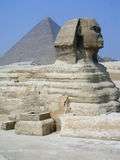
South relative to North, or more to the point S/E in relation to N/W. Anything dawned relative to an end result?
That same symbol [by way of Horizontal/Vertical] that every church and cathedral and in some form every mosque and ‘temple’...has within its floor plan. See it yet? The Cathedral of Coventry Uses the zig zag, [ meanders of a river/see ‘symbol’ books for verification ]... pattern up to that same crossover point. A Synchronistic example of the same. Why synchronistic? Because the designer, [ Basil Spence ] had a ‘dream’ about zigzag shapes; at the dentists; not knowing what they meant but he still included it within his overall cathedral design...and in the correct position, i.e., Nave.
Some say the only difference between ‘Coincidence’ and ‘Synchronicity’ is ..."A meaning full one’". [ ‘Coincidence’ / B.Inglis.] Once one understands the ‘divine bit’ in relation to A, B, and C...then that definition has a certain logic to it. A credible one.
Something hinted at: "As for the shield, the bizarre figure it bears, seems to be taken from some old magicians book. Upon first examination {impressionable ones?} one could believe that they were borrowed from the sombre 'Clavicles of Solomon', images traced with fresh blood on virgin parchment, which indicate in their frightening zigzags the ritual movements that the forked wand must perform under the sorcerers fingers." [Page 217 'The Dwelling of the Philosophers' / Fulcanelli].
Try ''fingers'' to make a further connection to get into that {universal?} mindset.
"The marriage of opposites is a principle of universal significance..." [Extract from the book by Tomberg]. Try ''Duality''. Purpose of.
"Where good deeds are 'ships' on which to ride the waves." [Chapter 24, 'The Secret of Secrets'. Mentioned elsewhere].
"...and always that tremendous desire drove me on, as if it were something outside myself. It was like the throb of a screw on board ship; awake or asleep, it was always there. One felt it underfoot on deck, one heard it if one woke in the night; it never ceased to drive the ship towards the port for which her course was set, though it lay invisible as yet below the horizon." [Introduction to the book 'The Cosmic Doctrine' by D. Fortune].
''A river of thoughts''.
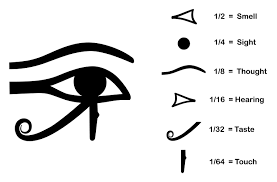
20:20 vision?
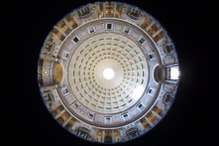
Oculus of the Pantheon.
"The moon goddess played a great part in the superstitions of fishermen....She was believed to be able to bring back lost ships....'Ships' have always been associated with her....I have described a number of these sea superstitions in Boats and Boatmen, and there is no need to repeat them here. I shall, however, mention the 'oculus'. This is the eye, which is still found painted on the bows of ships all over Europe and Asia. In ancient Egypt it apparently ensured the presence and 'protection' of the sun; but this appears to have changed to the eye of Isis....With the coming of Christianity many of these 'eyes' were changed to the 'Stella Maris' of the Virgin Mary. Some, however, would maintain that the word Mary is really related to the Ma of the Great Mother and thus Magog....The Pictish crown also descended from the feminine line. Here the oculus survives strongly on the bows of boats." [Pages 123/126 'GogMagog'].
Superstition only?
Try ''M''.
Side note: Picts = The ''Painted People''. {Naked / 'garment' link?}. 'See' it?
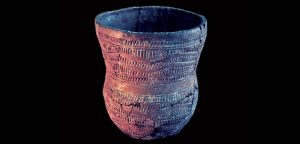
Twice as high as wide? Hands and water to make it? THEREFORE 'fire' = feet? Internal/External?
And/or: Pictland = N/E Scotland = ''At the edges of the Roman frontier - 'Clothed in the skin of some Caledonian beast'. Romans tried to defeat them, gave up, and built Adrians Wall. Another tribe from N. Ireland, a Gaelic People, that became established on the West coast later named the Scotti '' Their religion {Picts}: ''Their gods were the essences of Nature, living in places like bogs, mountains and streams: we dont know what their tattoo's mean because they didn't write anything down.'' Both later combined to defeat the Vikings. Eventually to be known as the Scots. The Picts were integrated with the Gaels.'' ['Mystic Britain: Lost Tribe of Scotland' / Smithsonian].
East and West coming together. Try Meritaten for something extra.
Recall the Beaker People in relation to Stone-henge. 'Fire' and Water?
Caledonia = North of the river Forth. Try Aberfoyle for something extra i.e., a distinction between higher/lower {'Aber' in Pictish = 'Mouth of a river'}. River Jordan? and/or Avon.
From a different perspective: a synchronistic one: " I'm using my brain in the normal fashion buts its working now with the 'Parkinson' in it....I'm trying to think up of esoteric, bizarre ways to describe the drawings....I did a picture called 'Purgatory' - its a man at the bow of a ship with a blindfold on...and he's being rowed along by a reptile. I like it, but I don't know what it is, and I have no intention of digging any deeper into it - to see what it is. I like the relationship the way it is." ['Billy Connolly: Life, Death and Laughter' / BBC 2].
Gebel el Silsila?
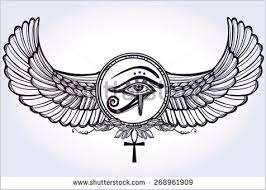
Just a different form in that ''duality'' sense of the word.
Understand subject material to get an idea of what it could be.
"There is a curious detail which occurs several times in these stories. It is said that so many of the kings were 'blind'. Anysis-Bocchoris, were either perished in, or escaped from, the flames was blind....Sesoosis, who escaped the 'fire', finally became blind, as did Pheros who tried to 'control' the Nile and the 'storm'.....It will be remembered that blindness was much in evidence at Letopolis, the 'Thunderbolt' city. The shrewmouse was sacred there because it was thought to be blind, and the name of the god who preceded Horus there was Mhnty-n-irty: 'He who is without eyes'. The commonly accepted story tells how Horus himself was partially blinded by Seth, the storm god.....It can hardly be by chance that this alleged 'blindness' has been inserted in the classical tales of the Egyptian kings....." [Page 76 'The Sky Religion in Egypt' / G. Wainwright].
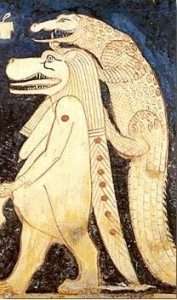
Analogy: Croc = ''reptile'' {i.e., 'lower self'}. And/or: ''...does the Volatile become Fixed and the Word becomes flesh."
"The blind and the seeing are not alike; nor are the depths of darkness and the light." [Quran 35:19/20].
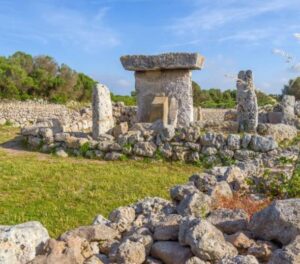
'Truncated' to enlarge. 'Scota' for a work in progress.
A work in progress: The Balearic Islands were first colonised by humans during the 3rd millennium BC, around 2500–2300 BC from the Iberian Peninsula or southern France, by people associated with the Bell Beaker culture.[8][9] The arrival of humans resulted in the rapid extinction of the three species of terrestrial mammals native to Mallorca, the dwarf goat-antelope Myotragus balearicus, the giant dormouse Hypnomys morpheus, and the shrew Nesiotites hidalgo, all three of which had been continuously present on Mallorca for over 5 million years.[10] The island's prehistoric settlements are called talaiots or talayots. The people of the islands raised Bronze Age megaliths as part of their Talaiotic culture.[11]
In ancient Greek religion and mythology, Pan (/pæn/;[2] Ancient Greek: Πάν, romanized: Pán) is the god of the wild, shepherds and flocks, rustic music and impromptus, and companion of the nymphs.[3] He has the hindquarters, legs, and horns of a goat, in the same manner as a faun or satyr. With his homeland in rustic Arcadia, he is also recognized as the god of fields, groves, wooded glens, and often affiliated with sex; because of this, Pan is connected to fertility and the season of spring.
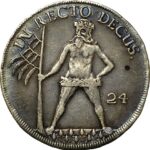 "The main story of The Taming of the Shrew comes from The Sleeper and the Watcher, a story in which Haroun al Raschid puts a gullible young man into a deep sleep, dresses him in royal clothes and tells his servants to treat him as if he really is the Caliph when he awakes. The outer, framing plot of The Taming of the Shrew centres on Christopher Sly. In Sufi lore a sly man is an initiate, or member, of a secret brotherhood. Christopher Sly is described in the first folio as a beggar, another Sufi code word, a Sufi being ‘a beggar at the door of love’.....As we saw in Chapter 17, Sufis trace the origins of their brotherhood further back than Mohammed. Some trace its chain of transmission back to the prophet Elijah or ‘the Green One’. The mystical, edgy spirit of the Green One pervades both A Thousand and One Nights and The Taming of the Shrew."
"The main story of The Taming of the Shrew comes from The Sleeper and the Watcher, a story in which Haroun al Raschid puts a gullible young man into a deep sleep, dresses him in royal clothes and tells his servants to treat him as if he really is the Caliph when he awakes. The outer, framing plot of The Taming of the Shrew centres on Christopher Sly. In Sufi lore a sly man is an initiate, or member, of a secret brotherhood. Christopher Sly is described in the first folio as a beggar, another Sufi code word, a Sufi being ‘a beggar at the door of love’.....As we saw in Chapter 17, Sufis trace the origins of their brotherhood further back than Mohammed. Some trace its chain of transmission back to the prophet Elijah or ‘the Green One’. The mystical, edgy spirit of the Green One pervades both A Thousand and One Nights and The Taming of the Shrew."

Coat of Arms- Minorca {Menorca}. 'Bower' to enlarge.
And/or: ''The basic plot of the Taming of the Shrew comes from the 'A Thousand and One Nights', .....A coded phrase meaning 'Mother of Records'. This is an allusion to the tradition that their lies hidden underneath the paws of the Sphinx, or in a parallel dimension, a secret library or 'Hall of Records', a storehouse of ancient wisdom from before the flood....Something encoded within....'' [Page 400 'The Secret History of the World' / J. Black].''
''Entelechy'' to enlarge.
Analogy: ''The Cosmos is the Holy Grail of communication.'' ['The Quest of Rose: Book 1: The Cosmic Keys of our Future Becoming' / A. Smitsman and J. Houston].
"Vision is the heart of seeing things invisible." [The Sacred Order of the 'Blinded Wanderer'].
''As many of those who have found themselves in pursuit of the 'Mysteries' will vouch, this is often the way of things. The impulses of the higher Self will somehow manage to reach through to the personality even though it is deaf and blind." ['Red Tree, White Tree' / W. Berg].
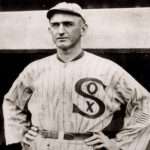
Shoeless Joe Jackson.

cobbler.
A working example: All the problems that Socrates mentions have been faced in this book and solved to my own satisfaction at least; but though ’a very curious and painstaking person' I cannot agree that I am any less happy than Socrates was, or that I have more leisure than he had, or that an understanding of the language of myth is irrelevant to self-knowledge. I deduce from the petulant tone of his phrase 'vulgar cleverness' that he had spent a long time worrying about the Chimaera, the horse-centaurs and the rest, but that the 'reasons of their being' had eluded him because he was no poet and mistrusted poets, and because, as he admitted to Phaedrus, he was a confirmed townsman who seldom visited the countryside: 'fields and trees will not teach me anything, but men do.' The study of mythology, as i shall show, is based squarely on tree-lore and seasonal observation of life in the fields.

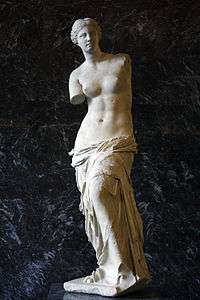
Socrates, in turning his back on poetic myths, was really turning his back on the Moon-goddess who inspired them and who demanded that man should pay woman spiritual and sexual homage: what is called Platonic love, the philosopher's escape from the power of the Goddess into intellectual homosexuality, was really Socratic love. He could not plead ignorance: Diotima Mantinice, the Arcadian prophetess who magically arrested the plague at Athens, had reminded him once that man's love was properly directed towards women and that Moira, Hithyia and Callone—Death, Birth and Beauty—formed a triad of Goddesses who presided over all acts of generation whatsoever: physical, spiritual or intellectual. In the passage of the Symposium where Plato reports Socrates' account of Diotima's wise words, the banquet is interrupted by Alcibiades, who comes in very drunk in search of a beautiful boy called Agathon and finds him reclining next to Socrates. Presently he tells everyone that he himself once encouraged Socrates, who was in love with him, to an act of sodomy from which, however, he philo¬ sophically abstained, remaining perfectly satisfied with night-long chaste embraces of his beloved's.beautiful body.
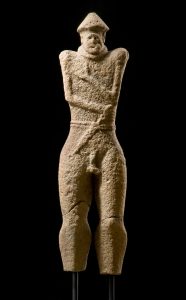
Naked/Garment to enlarge.
Had Diotima been present to hear this she would have made a wry face and spat three times into her bosom: for though the Goddess as Cybele and Ishtar tolerated sodomy even in her own temple-courts, ideal homosexuality was a far more serious moral aberrancy—it was the male intellect trying to make itself spiritually self-sufficient. Her revenge on Socrates—if I may put it this way—for trying to know himself in the Apollonian style instead of leaving the task to a wife or mistress, was characteristic: she found him a shrew for a wife and made him fix his idealistic affections on this same Alcibiades, who disgraced him by growing up vicious, godless, treacherous and selfish— the ruin of Athens. She ended his life with a draught of the whiteflowered, mousey-smelling hemlock, a plant sacred to herself as Hecate, prescribed him by his fellow-citizens in punishment for his corruption of youth. After his death his disciples made a martyr of him and under their influence myths fell into still greater disrepute, becoming at last the subject of street-corner witticisms or being 'explained away' by Euhemerus of Messenia and his successors as corruptions of history. The Euhemerist account of the Actaeon myth, for instance, is that he was an Arcadian gentleman who was so addicted to hunting that the expense of keeping a pack of hounds ate him up.
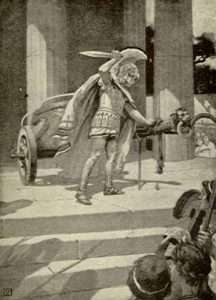
But even after Alexander the Great had cut the Gordian Knot—an act of far greater moral significance than is generally realized—the ancient language survived purely enough'in the secret Mystery-cults of Eleusis, Corinth, Samothrace and elsewhere; and when these were suppressed by the early Christian Emperors it was still taught in the poetic colleges of Ireland and Wales, and in the witch-covens of Western Europe. ['The White Goddess' / R. Graves].
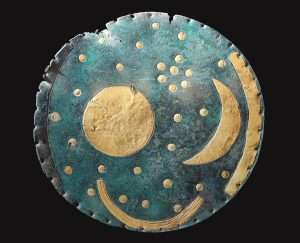
Walnut?
"Ships have long been said to plough the sea, and ploughs to sail the earth.'' [Quote taken from the book 'The Book of Babel: Words and the Way We See Things' by N. Lewis. Put ''plough'' in the usual box to understand something further - relative to an individual journey. Question. Is this subject nothing more than a play on puns? Understanding that universal framework with the 'divine bit' gives a possible understanding to all the above including that question.
'Ploughing' and 'Hoeing' as a means....?
Refresher: ''The hoeing of the earth was probably a mystical act. As has just been seen Pepi was instructed not to plough the earth and elsewhere another Hoer of the Earth is also told not to do so, but to protect himself from his enemies.'' [Page 29/30 'The Sky-Religion in Egypt' / G. Wainwright].
'Bull of the SKY'?
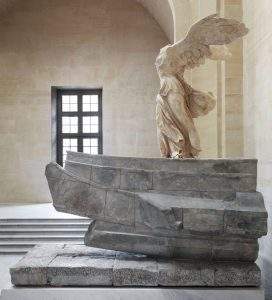 Side note: "The Greek origin of the Pleiades has been variously explained as being from the word meaning 'to sail', in reference to the heliacal rising of the group in May {the group of seven stars being called 'Maiae' by Virgil}, and from the word meaning approximately 'many', as well more reasonably from the name of the mother of the seven, Pleione. However, one of the poetic views, {''indulged''?} in by Homer in his 'Odyssey', linked them with birds, and in some myths they are the seven 'doves' which carried ambrosia to the infant Zeus, the Greek counterpart of Jupiter. 'Doves' were linked with Venus, and thus with Taurus as 'ruler'. '' [Page 116. 'The Secret Zodiac'].
Side note: "The Greek origin of the Pleiades has been variously explained as being from the word meaning 'to sail', in reference to the heliacal rising of the group in May {the group of seven stars being called 'Maiae' by Virgil}, and from the word meaning approximately 'many', as well more reasonably from the name of the mother of the seven, Pleione. However, one of the poetic views, {''indulged''?} in by Homer in his 'Odyssey', linked them with birds, and in some myths they are the seven 'doves' which carried ambrosia to the infant Zeus, the Greek counterpart of Jupiter. 'Doves' were linked with Venus, and thus with Taurus as 'ruler'. '' [Page 116. 'The Secret Zodiac'].
As innocent as it may seem to those first impressions try ''dove''. Connect it to the word in bold print if only in determining the 'foundation' of something. A possible one.
And/or: ''Jordan means the ''descender'' or oil flowing down. Witness: Dove or dive - to descend. Dove I. e., a diver - 'The spirit of god descended like a dove, and a voice said, ''This is my Son'' etc. '' [Page 143/4 'God-Man: The Word Made Flesh' ].

"The window inside the tomb of Jesus, showing the original rocks that surrounded the tomb Through the glass window on the wall opposite the burial bench you can see the actual unfinished rock wall of the tomb of Jesus. This window is actually a silent witness to the resurrection of Jesus." Question. Who was the Star Witness?
''Son of'' something?
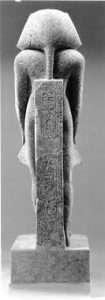
long or short?
A working example: ''Paracelsus says that Melusina i.e., the 'divers' vision appearing in the mind, departs from her nymphididic nature into another transmutation, in which she will remain if only that difficult Adech, that is, the inner man {ishon?}, will permit: who brings about both; that is death and life of the Scaiolae; that is the mental operations...In this way we may attain to the year Aniadin - that is to a LONG life by imagination. We take the characters of Venus, that of the shield and buckler of love to resist the obstacles that confront us....Paracelsus concludes that all the abstract enigmatical speculation { i.e., ''supermonic figments''}, in the Cyphanta {distilling vessel} has to become fixed by ''opening a window'' {i.e., 'understanding of'} - the operation of seperation or preparation.'' [Page 174/5 'Alchemical Studies' / C. G. Jung].
''Abroad'' to enlarge.
And/or: ''Cyphanta'' in relation to 'C'aroline and/or 'Cyprus' as a means...?
Clue: What are those ''vessels'' normally made from?
The point being - regardless of how abstract any text may be {especially to the beginner, and especially the OLD alchemy texts} - sense can be got from it - BEFORE those bigger questions are asked.

A centering within?
Something to ponder on {i.e., Taurus in relation to: "The relationship of these two pairs of zodiacal constellations to the Milky Way is not affected by precession and never changes. Gemini and Taurus will always mark the northern 'gate' of the Milky Way and Sagittarius and Scorpio will always mark the southern 'gate' of the Milky Way. Of the two, however, it is the later pairing that is the most important, because it so happens that the part of the Milky Way seen through this gate as we look up at the night sky forms the very center and heart of our galaxy..." {+ black hole and dark rift links?}. ['Magicians of the Gods'. Page 314].
May-pole? and/or Antares?
Exercise: "It was Edna Leigh who was first inspired to realize that the 'Catalogue of Ships' in Book 2 of the Iliad is not only a roll call of the 45 Greek and Trojan regiments but also the foundation of Homer's star and constellation catalogue...Homer's division of the heavens into 45 constellations is similar in number to the 45 of Aratus in the 3rd century BC and the 48 listed by Ptolemy in the 2nd century AD. Since those times, parts of the heavens have been reclassified and new constellations have been created. For instance, faint stars from a part of the constellation known to Homer as Leo were used by Hevelius {1611-87 AD} to create Leo Minor..." ['Homer's Secret Iliad'].
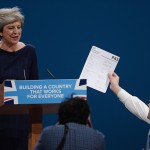
Receipt for trousers? £1000? Only 'time' will tell? Try ''Saturn'' for a different take, on the same theme.
Question. Which came first - IF ONLY in Homer's day - Number symbolism {i.e.,in relation to '45'} or the classification {and therefore the 'boundaries'} - of each. Try ''45'' to understand its deeper meaning - if only within the context of subject material.
"Sneferu's ancient cedar wood ship - 'Praise of the Two Lands' - is the first recording of a ship being referred to by name." [Wikipedia/Sneferu].
Question. Why cedar wood? If certain 'woods' are used to represent certain [concepts? and/or 'aspects' of the psyche] - what would ''cedar'' represent? For example - Was cedar used within that 'formation' North of Stonehenge [Woodhenge]. What would that imply - relative to a 'journey'? [and /or - 'petrified' wood].
''Whose height is like that of cedar trees.'' {Amos ii.9}.
3:11
''Twice as high as broad'' ? Nefertiti ?
"A whole forest was used up {in reference to the 2nd 'labour' of Heracles} - being an oblique symbolic reference to the uprooting of the dark forest that is widely used as representation of the condition of the material world." [Extract from the book by G. Knight].
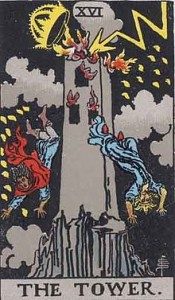 Something extra: "Almost every scientist who has ever kept a journal reports sudden flashes of insight....certain knowledge that reaches the surface by some unknown route: 'I felt an instant and complete certainty,' wrote the mathematician Poincare, who solved an incredibly difficult problem while 'daydreaming' on a bus. Of a similar experience the great Karl Friedrich Gauss wrote: 'As a sudden flash of light, the enigma was solved...For my part, I am unable to name the nature of the thread which connected that which I previously knew with that which made my success possible.'....The 'thread' has been named intuition - not that this explains its nature. It seems to be a second path to understanding. Reason is of course safer and surer {hint, hint}....The Minoan Geeks called her Ariadne {''most pure''}. Being a seafaring people, they recognized her power of drawing up the tides, as if by an invisible thread; they suspected that she likewise drew at the 'tides of human affairs'. Ariadne's thread is one of the great magic instruments of Greek mythology. It was the clew that guided Theseus through the dark windings of the labyrinth. It has become one of the most powerful metaphors of all ages, so that even the word
Something extra: "Almost every scientist who has ever kept a journal reports sudden flashes of insight....certain knowledge that reaches the surface by some unknown route: 'I felt an instant and complete certainty,' wrote the mathematician Poincare, who solved an incredibly difficult problem while 'daydreaming' on a bus. Of a similar experience the great Karl Friedrich Gauss wrote: 'As a sudden flash of light, the enigma was solved...For my part, I am unable to name the nature of the thread which connected that which I previously knew with that which made my success possible.'....The 'thread' has been named intuition - not that this explains its nature. It seems to be a second path to understanding. Reason is of course safer and surer {hint, hint}....The Minoan Geeks called her Ariadne {''most pure''}. Being a seafaring people, they recognized her power of drawing up the tides, as if by an invisible thread; they suspected that she likewise drew at the 'tides of human affairs'. Ariadne's thread is one of the great magic instruments of Greek mythology. It was the clew that guided Theseus through the dark windings of the labyrinth. It has become one of the most powerful metaphors of all ages, so that even the word  clew, which once meant only a ball of thread, now even means guidance to a hidden answer {center?}. Thus Gauss was guided through the labyrinth of his own unconscious by a thread he could not name. The usual place for lunar worship was the forest....The first Greek temples must have been groves of trees, for when they built stone temples, they continued to surround them with stone images of trees {'petrified'? therefore ''joining'' of the two? as a means...}. Similar in Egypt - where the early temples were stone ''forests'' of artificial eucalyptus trees. Near the pyramid of Amenemhat III - lie the remains of the greatest of these temples, the Egyptian labyrinth" - it contains an estimated 36000 trees of 'stone'....[Page 40 'Arachne Rising: The Search for the Thirteenth Sign of the Zodiac' / J. Vogh].
clew, which once meant only a ball of thread, now even means guidance to a hidden answer {center?}. Thus Gauss was guided through the labyrinth of his own unconscious by a thread he could not name. The usual place for lunar worship was the forest....The first Greek temples must have been groves of trees, for when they built stone temples, they continued to surround them with stone images of trees {'petrified'? therefore ''joining'' of the two? as a means...}. Similar in Egypt - where the early temples were stone ''forests'' of artificial eucalyptus trees. Near the pyramid of Amenemhat III - lie the remains of the greatest of these temples, the Egyptian labyrinth" - it contains an estimated 36000 trees of 'stone'....[Page 40 'Arachne Rising: The Search for the Thirteenth Sign of the Zodiac' / J. Vogh].
Why eucalyptus ? Any link to ''36'' ?
''A stela was discovered at Mersa on the Red Sea coast, by Rosanna Pirelli in 2005 that detailed an expedition to Punt during the reign of Amenemhat III. The expedition was organized by high steward Senebef. Under his direction, two contingents were formed. The first was led by an Amenhotep and bound for Punt to acquire incense. The second led by a Nebesu was sent to the mines referred to as Bia-Punt to procure exotic metals.[92][93] There were a total of between two and five expeditions organized during Amenemhat III's rule.[94] Two of the stelae recovered from the site are dated indicating activity there in his twentythird and 41st regnal years.'' [Wiki].
Question. What's the difference between Tower/Temple/Castle?
Reason {or intuition?} = ''Tower''? Flat top? What replaces it?
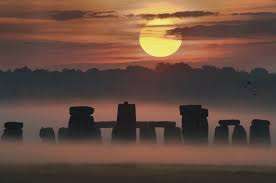
Temple/Castle or 'tower' ? As a means...?
REFRESHER: "The word 'temple' comes from the prehistoric Indo-European root 'tem', - which means ''to cut'' . A temple is a sacred place, a place of retreat that is literally 'cut out' from busy demands of everyday existence. The Greek word temenos - the scared precinct in which a sanctuary is located - originates from the same root. The Latin word religio means to ''relink'' {i.e., to the universe} - back to the mysteries depths of our own being.....As Henry Corbin notes {'Temple and Contemplation'} - the word templum originally meant a vast space, open on all sides - from which one could survey the whole surrounding landscape as far as the horizon. This is what is meant to contemplate - to set ones sights on...." [Page 388 'Alexandria' Vol 3. D. Fideler].

''Touch-wood''?
Recall the forests that these islands were covered in from the very beginning. Matriarch? Followed by Patriarch 'religions'? But what does that really mean? Something 'unknown' becoming 'known'? Unconscious {unmanifested?} - Conscious {manifested?}. Lunar/Solar as a means.…? Which comes first and why? OR does it matter?
And/or: 'Petrified' {i.e., 'joining' of the two i.e., wood/stone} - in relation to 'Ossified' {Spine} of say Osiris? in relation to :
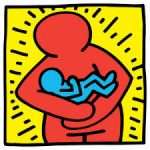 "The fire-wheel is in many myths, the 'masculine' form of the 'feminine' spindle." [Page 78 same book].
"The fire-wheel is in many myths, the 'masculine' form of the 'feminine' spindle." [Page 78 same book].
Anima/Animus as a means.....?
Gnosis in relation to the cognitive faculty? Enlarged elsewhere.
Side note: ''The medical term for the membrane that covers the brain and spinal cord comes from the Latin 'hard mother' {Dura mater}.'' [The Chase' / ITV / 2018].
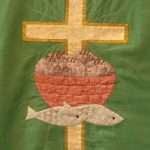
Bread/fishes.
And/or: ''Knocking on wood (also phrased touching wood) is an apotropaic tradition of literally touching, tapping, or knocking on wood, or merely stating that one is doing or intending to do so, in order to avoid "tempting fate" after making a favorable prediction or boast, or a declaration concerning one's own death or another unfavorable situation. A common explanation traces the phenomenon to ancient Celtic peoples, who believed it called on spirits or gods of the trees,[1][2] while Christians tie the practice to the wood of the cross of crucifixion.[2] A more modern theory from folklore researcher Steve Roud suggests it derives from a form of tag called "Tiggy Touchwood" in which players are safe from being tagged if they are touching wood.[2] The British version of the phrase "touch wood" has been traced back as far as the 17th century.''
- In Denmark the saying is 7, 9, 13 / syv, ni, tretten (usually accompanied by knocking under a table), as these numbers have traditionally been associated with magic.
- In Egypt, إمسك الخشب emsek el-khashab ("hold the wood") is said when mentioning either good luck one has had in the past or hopes one has for the future. When referring to past good luck the expression is usually used in hopes of the good thing continuing to occur via its spoken acknowledgment, as well as preventing envy. (Citation)
- In old English folklore, "knocking on wood" also referred to when people spoke of secrets....''
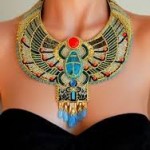 A side step: "In the oldest inscribed tomb discovered, going back to the time of Djoser, a long corridor is found whose smooth east wall is covered with paintings . The west wall is the exact copy of a stepped facade from the 1st Dynasty, with the difference, that at the back of the eleven niches contained between the twelve pilasters there are eleven wood panels admirably sculpted with the titles and representations of the tombs owner, Hesy. The pilasters represent in paint the wooden piers held together by dowelled crossbeams {'tongue/groove': Stonehenge?} on which brightly coloured tapestries were hung. The geometric motifs of these tapestries evoke a particular technique: 'tissage aux cartons'.[Extract from the book 'Egyptian Mysteries'. Enlarged elsewhere].
A side step: "In the oldest inscribed tomb discovered, going back to the time of Djoser, a long corridor is found whose smooth east wall is covered with paintings . The west wall is the exact copy of a stepped facade from the 1st Dynasty, with the difference, that at the back of the eleven niches contained between the twelve pilasters there are eleven wood panels admirably sculpted with the titles and representations of the tombs owner, Hesy. The pilasters represent in paint the wooden piers held together by dowelled crossbeams {'tongue/groove': Stonehenge?} on which brightly coloured tapestries were hung. The geometric motifs of these tapestries evoke a particular technique: 'tissage aux cartons'.[Extract from the book 'Egyptian Mysteries'. Enlarged elsewhere].
'Five' and 'Six'?
And/or....
"The first phase of the Satis temple [Elephantine] was an early - dynastic hut built into the corner of the three boulders enclosure."...."and opened roughly towards the south - eastern area of the horizon, where the sun rises at the winter solstice and where Sirius rose heliacally 3200bc."..."In all there are seven temples, built one on top of each other, from the earliest in 3200bc to Ptolemaic temple." [Chapter six, 'Black Genesis']. Recall Nabta Playa in the S/W corner. [information within]. From something 'unknown' to becoming 'known'. Representation of. Anything?
Question. Any gathering of planets to {determine?} that 1st phase?
Northeast = Mid summer sun rise. Southwest = Mid winter sunset. The start of something. The 'end' of which becomes the beginning of something else. Something 'unknown' becoming a 'known'.
"Rosslyn Chapel, built in the fifteen century by William Sinclair, incorporated replicas of the twin pillars of Solomons temple, in a way that anticipated every masonic lodge in the world. As carving on the lower frame of the window, in the south west corner of the chapel seems to be of a Freemasonic First degree." [ Chapter 23, 'The Secret History of the World].
Question. If S/W = 1st degree, what would S/E be represented as?
From a different perspective {one or two nuggets within it}:
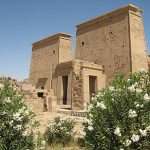
''H'' = Face to face?
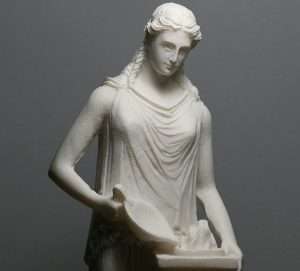
Hestia. Gravy train and/or Gravy boat?
''Across the Tamar the Devil had come,Though you might think it strange, And having left his Devon home Tried Cornwall for a change. Now when to Launceston he grew near, A-skipping o'er the sod,
He spied a rustic cottage there With windows all abroad. And in the kitchen might be seen A dame with knife in hand, Who cut and slashed and chopped, I ween To make a pasty grand. "Good Mornin', Missus, what is that?" "Of all sorts, is a daub. 'Tis beef and mutton, pork and fat, Potatoes, leeks, and squab." "A Cornish pasty, sure", says she, "And if thou doesn't mind, I soon shall start to cut up thee
And put ye in, you'll find!" In fear he turned and straight did flee Across the Tamar green And since that day in Cornwall He has never more been seen!''
Among others Wide/Narrow to enlarge.
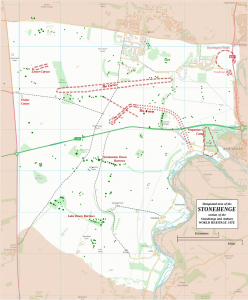
Question. N/E, S/W, S/E, N/W - What do they imply? Season changes only?
"The great types and symbols have been put into his [the initiates] own hands - the preparations have been made for his assistance in the long sequence of grades; and he has been told in the Portal of the Rosy Cross that the intimations of spiritual consciousness should begin to manifest within him. That is a state which no man - whether Hierophant in the G.D. ['Golden Dawn'] or chief Adept in a Temple of the Second Order - can communicate to recipients. The most that can be done is to awaken that which is sleeping..." [Extract from the book 'The Magister']. Question. Why a ''rosy'' cross. What does it represent? Question 2. Why should it represent anything at all?
N.B. Journey {downstream?} to the entrance of the {path?} that leads to Stonehenge = Waning? i.,e., exterior. Return journey, FROM Stonehenge, on the {inside?} of that path = Waxing? Those smaller blue stones - at the end of which - equates to something learnt and/or understood? Before returning back upstream? {S/E?}.
"The 'rituals' themselves introduce new concepts and symbols, whilst offering explanations of earlier rituals, pedagogic description of the symbols of the present ritual, and hints of further teaching to follow in later grades." [Same book].
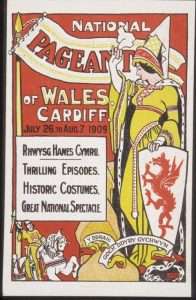
Four Corners? 'Triangular' head gear?
''Study'' does the same. The start point of which becomes - as it is in any subject - those ''foundation stones'' on which to build on. Refresh [i.e.,revise] in Part 1.
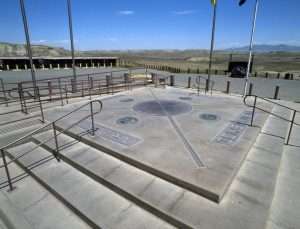
"Four Corners Monument, marking the only spot in the United States where four states (Arizona, Utah, Colorado, and New Mexico) come together."
And/or: ''The mysteries Bluestones exist only in one location in the world: the Preseli Mountains in S/W Wales....The Bluestones are unique, being of several different types of related stone {spotted dolerite}, Geologists sidestep the question as to why in only this location they can be found, but legend does not. Ancient mythological history tells us they came from the sky - came in streaks of fire to 'impregnate' the hillside with the 'magic' of the gods. Legend says they were a meteor shower. It has long been substantiated, that the Bluestones arrived on Salisbury Plain well before the larger Sarsen sandstones...." [Page 333 'The Lost Books of Merlyn'].
Try ''meteor'' and/or ''spotted'' to get that little bit closer to a mind set. Rather than leave ALL to those first impressions especially when such words as ''impregnate'' and ''magic'' are used. Not to mention the title of the book?
'Mountain low, valley high' for a more practical analogy.
And/or: The narrator of 'The Stonehenge Enigma: What Lies Beneath' - asks the question: ''But why this valley to build such a monument. Why this particular one?''
'CHALK'?
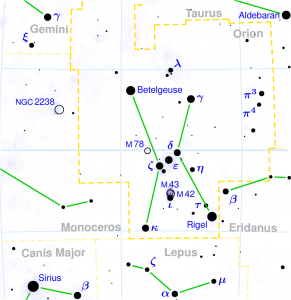
Fire AND water. Truncated pits?

Flat top? 'Horizon'?
Those etched lines in the surface of the hard limestone landscape caused by glacial activity {i.e., frozen water} that lead up to Stonehenge - in relation to: ''The nature of water is soft, that of stone is hard; but if a bottle is hung above the stone {or a cloud of rainwater?}, allowing the water to fall drop by drop, it wears away the stone. So it is with the word of God; IT is soft and our heart is hard, but the man who hears the word of god, often, opens his heart to god': This is what the Desert Fathers and Mothers came out here to do: 'Teach your mouth to say what is in your hearts.'' [ Abba Poemen: 'Pilgrimage of Freedom/ Lent / Day 5' / Magdala / Israel / 2023].
'Tongue' to enlarge.
In other words such activity {regarding external construction work} is an internal quality as opposed to external quantity. Shamanism being the same. More than probably they are an external expression {in 'concrete' form} of an internal shamanic realization. To allow others to attempt an understanding without the RITUAL participation.
''Duality'' link.
Imhotep to enlarge {i.e., as one of its early 'administrators'}.
'144' to enlarge.

Same shapes on the left rump at Gobel-el-Silsila
And/or: Massive pit holes discovered that envelop Durrington Walls 15 metres across tapering down to 10 metres. In other words triangular shaped - but with curves i.e., cone shaped. As opposed to {say} the mastaba, i.e., sloping sides FROM a square/oblong BASE. As with Menkaure's son {i.e., 'Son of'}, who reverted BACK to a single mastaba AFTER the completion of those EIGHT monuments from Saqqara to Djedefre's pyramid.
Follow those SLOPES up and down. WHAT FORM DO YOU 'SEE'? That FORM that is used throughout within a universal mindset WHILE constructing and participating in such activities - in the minds EYE.
''Straight south'' to enlarge.
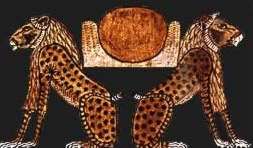
The principle of ''duality''. Anything?
Refresher..."The concept of the Pillars is of great importance. Everything that exists to objective perception is a manifestation of forces in 'duality.' These dual forces in complement or vortex ['spiral' link], are represented by two pillars. The pillars may be pictured as silver and black, or green and gold, or of other contrasting or complementary colours.
Isaiah 19:19 to enlarge.
Mottled?
Colour symbolism, is largely subjective. Its expression is a uniquely personal statement.
Go to top of page Go to bottom of page
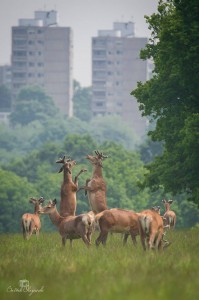
Concrete Pillars? Stags or Doe's?
The 'forms' are more objective, in their mass and space and relative position, one to another. At root, the pillars are positive and negative, male and female, active and passive, but remember none of these concepts is synonymous with another. Each definition has its own limitations. The fundamental postulate is that each pillar is the opposite of the other, yet opposite in relatedness. As opposite as the center and the circumference of a circle....
...The representation of these pillars also forms a gate {'false doors'?}. Any two 'forces' in complementary action define another plane of being where they are a unity. Two and one makes three. Thus the triangle is an important symbolic figure as well as the circle and the cross " " [Chapter one, 'The Rose Cross and the Goddess' by G. Knight. All emphasis, this readers]. Recall what ''objective'' implies.
Recall 'its' importance in any subject. [Representational of].
Refresher...Some say the only difference between ‘Coincidence’ and ‘Synchronicity’ is ..."A meaning full one’". [ ‘Coincidence’ / B.Inglis.] Once one understands the ‘divine bit’ in relation to A, B, and C...then that definition has a certain logic to it. A credible one.
Or even 'Clairvoyant Reality'. L. LeShan, [Towards a General Theory of the Paranormal]. Formally known as...'The Medium, The Mystic and the Physicist'. "A classic account of one mans search for the meaning of impossible events".
'Three Things You Need to Know About Rockets' by Jessica Fox.
'Mans Search for Meaning' / Viktor Frankl.

Leaping / jumping spiders.'153'?
"Many other scientists have agreed with Carl Jung's opinion that the number of startling coincidences in ''the net'' increases sharply around anybody who becomes involved in depth psychology or in any investigation that extends the perimeter of Consciousness." [Extract from the book 'The Cosmic Trigger'. Mentioned elsewhere]. Try ''Pauli'' {on all pages} for further connections. Then try ''boundaries''. Question. Meaningful ones? OR...
Neith/ Arachne? as a means...?
Recall Sokar at the ''back of the head''.
Egyptian equivalent of same subject?
Neolithic attempt of defining something?
That something in relation to that universal ''bit''?
 "Like much of the phenomena described in this book, coincidences are much easier to account for from the point of view of 'idealism' than they are from the point of view of 'materialism'." [Chapter 47, 'The Sacred History']. Recall what the author infers by 'idealism'. [Use the 'find' indicator], i.e.,''search box.''
"Like much of the phenomena described in this book, coincidences are much easier to account for from the point of view of 'idealism' than they are from the point of view of 'materialism'." [Chapter 47, 'The Sacred History']. Recall what the author infers by 'idealism'. [Use the 'find' indicator], i.e.,''search box.''
Think about both in relation to what is inferred by ''the net,'' i.e.,the omphalos stone {navel link}, i.e.,central to something - or more specifically - central; to a theme.
N.B. Saturn {'perimeter'?} = Lord of Decrease. Landscape equivalent?
" Stretching away toward the south lay the Harran Plain, where the patriarch Abraham is said to have set out on his journey to the Promised Land, some seven thousand years after the incredible events that gave rise to the almost alien world that awaited discovery here at Gobekli-tepe, the 'hill of the navel'. " [Extract from the book 'Gobekli-Tepe:Genesis of the Gods' by A. Collins].
"...a knotted net covering its surface. The same stone that Cronus swallowed,i.e.,into the bowels of the earth,i.e.,''lower'' relative to ''higher''{i.e.,represented with ''Zeus'' - or more importantly - what that word implies - to a core theme}. And/or...
"The omphalos at the Church of the Holy Sepulchre, Jerusalem, represents, in Christian mediaeval tradition, the navel of the world {the spiritual and cosmological 'center' of the world}. Jewish tradition held that god revealed himself to his people through the 'Ark of the Covenant' in the Temple in Jerusalem, which rested on the foundation stone marking the 'center' of the world. This tradition may have stemmed from a similar one at Delphi..." [Wikipedia/omphalos - including parenthesis].
Put those keys together to define the parts within the whole. Something other than the obvious, i.e.,TABERNACLE = a potential yet to be realized. Representational of. Revise in Part 1.
Question. A realization {''becoming''?} of what?
 And/or: "My son', said the sage, 'the three masters have let you 'taste' the very essence of their subject. May it please them to add a definition of man.' The Mystic said, 'Man is the tabernacle of the divine word.' The Geometer said, 'Man is the measure of cosmos'. The Symbolist said, 'Man is a living statue of the Great World and sum of its symbols.' ['Her-Bak'].
And/or: "My son', said the sage, 'the three masters have let you 'taste' the very essence of their subject. May it please them to add a definition of man.' The Mystic said, 'Man is the tabernacle of the divine word.' The Geometer said, 'Man is the measure of cosmos'. The Symbolist said, 'Man is a living statue of the Great World and sum of its symbols.' ['Her-Bak'].
 A side step: "...In fact, i was often amazed that so many people did have so many strong opinions on the subject. I began to understand why the Sufi's are always attacking ''opinions.'' Everybody nowadays thinks they must have an ''opinion'' on everything, whether they know anything about it or not. Unfortunately, few people know the difference between an opinion and a proof. Worse yet, most have no knowledge at all about the difference in degree between a merely legal proof, a logical or verbal proof, a proof in the soft sciences like psychology, and a proof in the hard physical-mathematical sciences. They are full of opinions, but they have little ability to distinguish the relative degree of proof upholding all these various opinions. We say ''seeing is believing,'' but actually, as Santayana pointed out, we are all much better at believing than at seeing. In fact, we are seeing what we believe nearly all the time and only occasionally seeing what we can't believe." [Extract from the book 'The Cosmic Trigger'].
A side step: "...In fact, i was often amazed that so many people did have so many strong opinions on the subject. I began to understand why the Sufi's are always attacking ''opinions.'' Everybody nowadays thinks they must have an ''opinion'' on everything, whether they know anything about it or not. Unfortunately, few people know the difference between an opinion and a proof. Worse yet, most have no knowledge at all about the difference in degree between a merely legal proof, a logical or verbal proof, a proof in the soft sciences like psychology, and a proof in the hard physical-mathematical sciences. They are full of opinions, but they have little ability to distinguish the relative degree of proof upholding all these various opinions. We say ''seeing is believing,'' but actually, as Santayana pointed out, we are all much better at believing than at seeing. In fact, we are seeing what we believe nearly all the time and only occasionally seeing what we can't believe." [Extract from the book 'The Cosmic Trigger'].
That ''proof'' that in this subject - as in most others - can be decided by an 'objective view'.
Question. What symbol represents it? What symbol represents that 'action of the mind'?
'On Having No Head: Zen and the Rediscovery of the Obvious' / D. E. Harding.
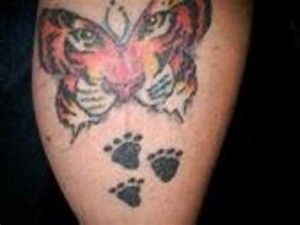 As {one} example: "Venus, portrayed as a circle, with a smaller circle at its center, has four wings. In this form, it is portrayed in Mexican codices marking a number of significant planetary orientation positions for religious buildings. For example, it is often drawn framing the port-hole windows or doors of a temple, or just rising between the V crenellations of a ball court, {'notch'?} or some similar architecture structure: Such diagrams remind us that one function of the pyramids was to measure the rising and settings of Venus, and thus check the accuracy of one of the three calendrical systems which regulated the pre-columbian civilization. The similarity between this Mayan image, or sigil, for Venus and certain other ancient symbols for the Sun god, i.e.,Ahura Mazdao of the ancient Chaldeans - which showed him as a disc with wings. The image also reminded us of another winged disc of Egypt, which offered a further curious parallel with the Venus of the Mayans. The interesting thing about this was that it was directly linked with the serpent - called the uraeus serpent by the later Greeks...It is still preserved on the foreheads of the statues of Rameses ll in the temples of ancient Thebes..." ['The Zelator'].
As {one} example: "Venus, portrayed as a circle, with a smaller circle at its center, has four wings. In this form, it is portrayed in Mexican codices marking a number of significant planetary orientation positions for religious buildings. For example, it is often drawn framing the port-hole windows or doors of a temple, or just rising between the V crenellations of a ball court, {'notch'?} or some similar architecture structure: Such diagrams remind us that one function of the pyramids was to measure the rising and settings of Venus, and thus check the accuracy of one of the three calendrical systems which regulated the pre-columbian civilization. The similarity between this Mayan image, or sigil, for Venus and certain other ancient symbols for the Sun god, i.e.,Ahura Mazdao of the ancient Chaldeans - which showed him as a disc with wings. The image also reminded us of another winged disc of Egypt, which offered a further curious parallel with the Venus of the Mayans. The interesting thing about this was that it was directly linked with the serpent - called the uraeus serpent by the later Greeks...It is still preserved on the foreheads of the statues of Rameses ll in the temples of ancient Thebes..." ['The Zelator'].
A: Recall where Thebes is situated. B: For something further to ponder on try ''gap''.
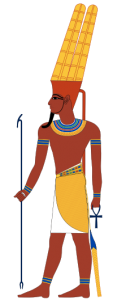
Why ostrich feathers? {'Plumes'?}. 'Head in the sand' in relation to ''invisible'' - as a means...?
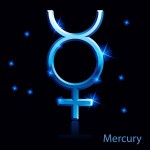
''Opening''?
"Intriguing, in Thebes, is the development of the Ogdoad which multiplies to the extent of becoming fifteen. The fact must not be overlooked that the number '15' {horizon?} is no longer in relation with the primordial principle but with the monthly and lunar character of Tehuti {Saturn as Lead}. Thebes represents the ultimate phase of the first royal becoming. Whereas the temple of Luxor is the fulfillment, the human epitome of the cosmic opus, the temple of conception and birth of Royal Man {vertical?}, at Thebes the cosmic triad dominates. Under the names of Amun, Mut, and 'their son' Khonsu {''double'' link}, its history constitutes the principle subject of the temple of Karnak...A living, maternal milieu, rich in active 'Fire' lent by Ptah {i.e.,material form. Representational of}. Mut receives the Amunian seed by means of which Atum-Nefertum, at this phase, will become Khonsu. This Khonsu is somehow a new, spiritualised Atum, and this one will make Horus reappear in all his glory {''glass boat'' link?}...

The window inside the tomb of Jesus - Through the glass window on the wall opposite the burial bench you can see the actual unfinished rock wall of the tomb of Jesus. This window is actually a silent witness to the resurrection of Jesus.
The mysterious Khonsu plays a preponderant role at Thebes; his symbols comprise all the scepters tied together {'knot'?} with the exception of the wadj, the sign of opening, an expansion that only Thoth of Hermopolis {Khemenu} can bring about {'Mercury'?}. As crown, Khonsu wears a disk on a crescent, the representation of both the New Moon, and of eclipse, Moon and Sun united... " ['Sacred Science']. REMEMBER - ALL as a representation of SOMETHING, i.e.,recall the symbol of Hermopolis. Link it to the word ''expansion''.
Side note: ''Now its not built on the scale of man but on the scale of the gods - of one god - Amon Ra the god of the sun. We no longer build temples to our sun, we build machines that allow us to look deeper into space than ever before...." [Brian Cox on Karnac].
Question. Did the Egyptians {and therefore most other cultures} really worship the 'sun' or is the Sun used to represent something else?
And/or: ''This moment {sunrise at Karnac} that the Egyptians worshipped instinctively we now understand in exquisite detail." Same.
Question: ''Does something - 'unbelievable' - become any less of a possibility?
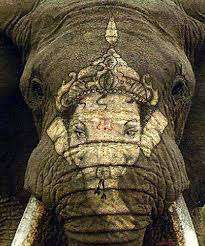 A working example: ''All my servants on their way to the High Places have had to make this detour through the desert. It is called the Furnace of Egypt....Those who come down to the darkness and furnace of Egypt - go on their way afterwards as royal men and women, princes and princesses of the Royal Line.'' [Page 53 'Hinds Feet in High Places' / Hannah Hurnard].
A working example: ''All my servants on their way to the High Places have had to make this detour through the desert. It is called the Furnace of Egypt....Those who come down to the darkness and furnace of Egypt - go on their way afterwards as royal men and women, princes and princesses of the Royal Line.'' [Page 53 'Hinds Feet in High Places' / Hannah Hurnard].
And/or: ''Behold as the clay is in the hand of the potter, so are you in my hand.'' [Jer. 18:6].
Nippur to enlarge.
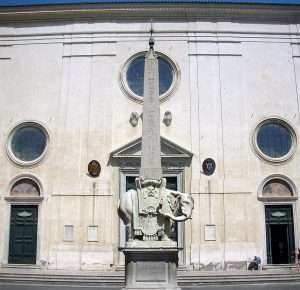
Eyes, ears and nose. In profile or face on?
Question 2. When ALL the available information is accessed and not just its most obvious - what do you think?
''If you want to hide something successfully - hide it in plain site.''
A work in progress: ''The child born of the couple Ptah-Sekhmet is NerferTum, 'the fulfillment of Tum', who appears as a lotus flower that RA, according to the Pyramid Texts, wears on his nose each day.'' [Page 32 'The Temples of Karnac'].
Understanding those simple {pagan?} lines gives the possibility of a location within a mind set. A landscape one.
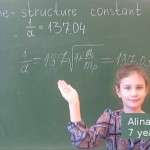
A fan or a prediction?
And/or: ''The need for a rational and INFORMED description of how to apprehend the forces that form the structure of the ''inner worlds'' - those inner forces that underpin and mould the outer world....a need to come to terms with these other 'dimensions' of reality is fast coming upon Western man. Those who have not yet understood this need are at times dismayed by what they see as a 'flight from reason'. However, this flight aught to be realised for what it is. It is not a mindless rout of the irresponsible but the winging pinions of an informed INTUITION no longer content with intellectual preoccupations with surface appearances {'mindset'}. Others decry what they choose to call 'dabbling in the occult', which they consider either idly foolish or perversely misguided. Whilst we too would not wish to encourage the occult dilettante, those of us who have spent more years in this RESEARCH than we care to remember feel, with all due humility, that we have gained in wisdom and human fulfilment rather than lost." [Forward to the book 'The Western Way' / C+ J Matthews].
'Queendom' to enlarge.
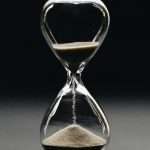
Where have you seen it before?
"All planetary glyphs are composed of a few primary symbols: the circle, which is said to represent the wholeness of Spirit, the half circle which is the receptivity of the Soul, and the cross which represents Matter..." ['Saturn, Chiron and the Centaurs'].
Side note: Amun {male} = 'The hidden and/or invisible one'. Mut {female} 'eye of Ra',i.e.,"She who gives 'birth', but was herself not born of any'' {i.,e.,symbolic intent only}. Put the two together - something hidden {unknown} becoming known {visible} = Amun Ra. 'See' it?
And/or: "Atum-ra, self begotten in the nw, puts forth two primordial Qualities, Shu, principle of the dry, Tefnut principle of the wet..." ['Her-Bak'].
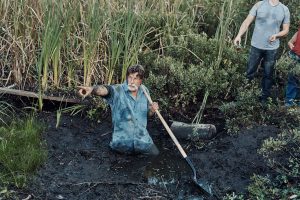
'The Swamp' / Oak Island. Question. If Mr Lagina was asked to choose between the continuation of the ''healing'' process and a pot of gold - which would he choose? If ONLY ONE could be selected. 'Treasure' FOUND? Question. Is that the purpose of the design/construction of same.. Mr Bacon and the induction method. Landscape equivalent - an in situ / working example of same. To get ones cognitive faculty in motion? A practical example of method?
Refresher: "The Agnisuryans respond to the sound. The waters ebb and flow. Let the 'magician' guard himself from drowning, at the point where land and water meet. The midway spot, which is neither dry nor wet, must provide the standing place whereon his feet are set. When water, land and air meet there is the place for 'magic' to be wrought {'fire'?}."
Atum-ra = Heliopolis. Amun-ra = Hermopolis and eventually Thebes. In other words - a beginning/middle/end. All as a means...?
Question. 'IN/OF' the horizon. Which and why?
Understanding that 'difference' gives clues as to a direction - as to where to look for further clues - to a final resting place.
Question 2. Where would the Aten fit into that beginning and end?
Clue: embossed / debossed?
Question 3. {in relation to above picture- 3 back}: Why in profile, right to left as opposed to, say, left to right {i.e., as one example the Woodroffe profile. Enlarged elsewhere}. Clue. One relates more to the 'horizonal' {view point?} - the other to the 'vertical' one, i.e., represented - as one example - as the Royal Way, i.e., astrology link, hence ''Saturn as Lead'' - as a means?}. Get it? Question. Mumbo jumbo?
Refresher: "A seed sized portion of the inner stone of spiritual effort will transform enormous amounts of the leaden inertia we all encounter in our own souls."

Found on Oak Island. Enlarged throughout. Coincidence or a …..?

'Stamp of the feminine'. Real or symbolic?
Side step: "The throne is carried on two litters by twelve princes, their heads adorned with feathers. The inscription calls them royal sons and great noblemen {seru}. The royal palaquin is preceded by personages in robes of state wearing two ostrich plumes on their heads and who are described as follows: "known'' of the king, his majesty's followers, the royal sons, the greatest noblemen {seru} and all the dignitaries'. Speculation is rife as to the meaning of the title "known" of the king," an expression that goes back to the ancient empire: If these 'personages' are only members of the court, as the classic translations would have it, it is difficult to understand why they should have precedence over the princes of 'royal blood' who are mentioned in third place only. By their title, however, which can also be interpreted to mean "those of royal knowledge,'' their place should be in first rank. The meaning behind these epithets can be reached with more precision through alternative translations. "Known of the king" could be rendered as "those who know the royal path," by which is meant the direct path through Horus..." ['Sacred Science'].
''The neters that are in his following came into existence''. [Page 162, same book].
'Followers of Horus' ?
 Swaddling cloth?
Swaddling cloth?

"ON THE RAUHNÄCHTE, THE DARKEST nights of the year, she leads an entourage of women on a wild hunt, accompanied by screeching demons. They fly on distaffs, wooden sticks used in traditional wool-spinning that look very much like brooms. In some tales, she appears as a crone with one webbed foot, like that of a goose or swan, trailed by spirits of unbaptized children, the smallest dragging a pitcher filled with mothers’ tears. In other tellings, she is a beautiful woman in white robes who emerges during Twelfth Night."
Epiphany?
Red Queen of Palenque? Enlarged elsewhere.
Question. Nefertiti or Kiya?
'A feather in the cap'.
Egyptian equivalent = ''Plume'' ?
''The name of the weather pattern in which a plume of warm air moves from the Iberian plateau {peninsula} - to N/W Europe is called the Spanish plume.'' ['The Chase'].
'Pillars of Hercules'?
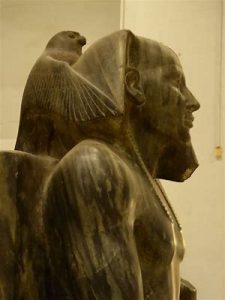
Left/right or back of brain? Question. The word 'psychology' only came about since Freud and Jung. So what are the ancients trying to tell us?
Refresher: ''Ma'at is the weaving {Neith/Arachne}, the pivotal feather at the center of the vibrant web of all interrelationships.''
And/or ''Neith weaves a balance of logic and creativity in the left and right hemispheres of the brain...'' [Pages 10/162 'Sekhmet: Transformation in the Belly of the Goddess' / N. Scully].
Understanding the above gets the reader closer to what the author of the Tutankhamun Prophecies attempts to 'see' but without manipulation of information. Enlarged elsewhere {i.e.,try "McEnroe" / Part 2}.

"Head Jar"? Anything growing/sprouting?
The word ''epiphany'' used throughout in such programs as 'Will Self's Search For Meaning' {Radio 4/4pm/10.8.16}. Many opinions given about ''the nature of our existence'' as seen differently in all philosophy's and religions. Understand this one final subject to define all those convoluted questions and answers.
And/or: ''Since four is a very 'material' and practical number, it rarely occurs in superstitious customs. An exception is the 4 - leaf clover, which is supposed to bring good luck, probably because it is so rare. Following an old German custom {Celtic?}, on EPIPHANY, girls would plant one bulb each in the four corners of the house, and each bulb would be given a man's name, and the one that sprouted first was believed to point to her future husband.'' ['Mystery of Numbers'].
The bulb is an archaic term for the medulla oblongata.[1] In modern clinical usage, the word bulbar (as in bulbar palsy) is retained for terms that relate to the medulla oblongata, particularly in reference to medical conditions. The word bulbar can refer to the nerves and tracts connected to the medulla such as the corticobulbar tract, and also by association to those muscles innervated, including those of the tongue, pharynx and larynx.
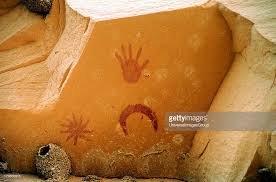
'Great Turning at hand' ? in relation to the 'star of light'. Enlarged elsewhere. Question {Oracle?]: Next notable cosmic incident {which will eventually be used as a means etc.,} = Supernova {i.e.,Antares . Enlarged elsewhere} OR comet {i.e.,as speculated by several authors. Enclosed}. Only 'Time' {i.e.,''Saturn'' will tell}. Enlarged elsewhere.
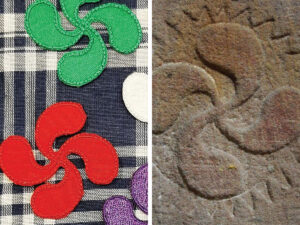
The lauburu (from Basque lau, "four" + buru, "head") is an ancient hooked cross with four comma-shaped heads and the most widely known traditional symbol of the Basque Country and the Basque people.....Can be constructed with a compass and straightedge, beginning with the formation of a square template; each head can be drawn from a neighboring vertex of this template with two compass settings, with one radius half the length of the other.
"The circle is an image of pure 'spirit'...The crescent {semi-circle} that for the 'soul'...The vertical line that for the 'mind' and the horizontal line that for the 'body'. When the mind and body are combined, they form the 'cross of matter'. [Page 6 'Mapping the Psyche']. Try ''semi-circle'' for a connection. And/or ''three and four''.
Question 2. Horizontal/vertical {5-7 paragraphs back} in relation to the cliff face and overhang as seen in the Chacoan culture {Wonders of the Universe / B. Cox}. Overhang {S/W?} U-turn {S/E?}. Recall the semi-circle buildings within same culture. {i.e.,semi-circle in relation to 180 degrees; and/or ''bottom/up''?}. Try ''semi-circle'' {semicircle} and/or ''hewn/UNhewn'' and/or ''altars of sacrifice''. Apse of a church?
'Waters of the Gap'.

A 'birthing'?
From a different perspective: ''BURIAL SK 3870 WAS EXCAVATED AT ALL SAINTS CHURCH, FISHERGATE, YORK, IN 2007. This unusual, tightly crouched burial {i.e., in fetal position}, was found in a large grave {'shallow'?}, in the church apse. Preliminary research at the time of excavation suggested that this skeleton may represent the remains of Lady Isabel German, a prominent anchoress who resided at All Saints in the 15th century.''
A male participant is known as an anchorite.
'The Roots of Coincidence' {and} 'The Challenge of Chance' by A. Koestler.
"Blake was prepared to jump into the void [key] in order to discover whether 'providence' is here also. He found, of course, that it was, providence being within us." ['Alexandria' vol 1. Mentioned elsewhere, by D. Fideler].
'Archai: Saturn and the Theoretical Foundations of an Emerging Discipline'.
Fishers of Men?
Tower of the fish?
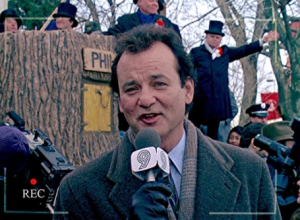
'Stump' to enlarge.
Side note: "Pennsylvania Polka" is a polka song written in the United States in 1942. The song was written by Lester Lee and Zeke Manners, and published by Shapiro, Bernstein & Co. It became an almost immediate hit for The Andrews Sisters.[2] Frankie Yankovic also made a successful recording of the "Pennsylvania Polka".[3]
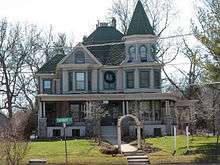
Cherry Street Inn {Groundhog Day}.
The song consists of a chorus and one verse, describing itself as a popular dance craze ("everybody has a mania / to do the polka from Pennsylvania") and joyful event ("while they're dancing, everybody's cares are quickly gone"). The lyrics mention the city of Scranton, Pennsylvania, but no other specific references to Pennsylvania places or culture.[2]
Though Lee and Manners are given credit for writing the song, a former bandleader from Dupont, Pennsylvania, said he had written and played the tune, though without lyrics, in the 1920s. Paul Motiska said his composition, "The Laughing Polka", became a regional favorite after his big band, the Melodions, was featured on a Scranton radio station in 1923.[1] In 1952, The Standard-Speaker newspaper of Hazleton speculated that this was the origin of the lyric "It started in Scranton, it's now No. 1."[4]
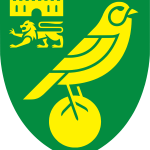
The Canaries. ''Britains most easterly city.''
Despite its origins in Northeastern Pennsylvania, the song is most associated with Greater Pittsburgh, where it was popular among that region's Polish immigrant community and served as an anthem for the 1970s Super Bowl-winning Pittsburgh Steelers football teams.[5]
And/or: In 1778, during the colonial era, Isaac Tripp, the area's first known white settler, built his home here; it still stands in North Scranton, formerly a separate town known as Providence. More settlers from Connecticut Colony came to the area in the late 18th and early 19th centuries following the end of the American Revolutionary War, since their state claimed the area as part of their colonial charter.

Qurna 'queen'.
Continued: ''On 30 December 1908, the team uncovered a burial under a rocky outcrop on the north side of the valley. They removed several large boulders and found the burial in a shallow trench...The coffin contained the remains of a woman, around five feet tall, aged about 18-25. With her was the white-painted rectangular coffin of a 2–3-year-old child. Both were wrapped in linen. The variety of objects buried in the grave suggest that they were members of the royal family at Thebes...The coffin of the woman has a hieroglyphic inscription in a vertical column down the centre. A name should appear at the end of this, but it was damaged and lost, probably because of the placement of the child’s coffin on top {i.e., near the feet}. The length of the gap in the inscription indicates that it contained a substantial title before the name. There is a tantalising hint provided by one hieroglyph that suggests it may have read ‘united with the white crown’, a title used for royal women at the time...

White Chapel. Karnac. Its very first. Made of limestone {i.e., ancient sea beds}. 'White' Goddess?
''The Qurna coffin is a beautiful example of a style known as a rishi coffin that was common in this period (c1700-1550 BC). Rishi is the Arabic word for feather, an apt term for the large, feathered wings which wrap around the lid of such coffins. There are several theories about the meaning of the feather pattern. It could indicate an association with the ba, an aspect of the person’s spirit that could take the form of a human-headed bird {Spirit into soul?}.... The Qurna coffin is large, measuring over half a metre taller than the woman who was buried in it. It was made from two whole tree trunks which were skilfully carved to fit together. The base is made from sycamore fig and the lid is made from tamarisk. The lid is gilded with gold leaf and painted with expensive pigments, particularly Egyptian blue and orpiment yellow....'' [Page 30 'World Archaeology' / Issue 116].
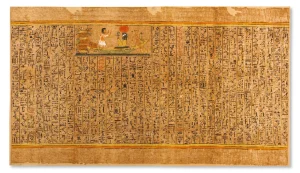
A scene from Ani’s Book of the Dead, dating to the Nineteenth Dynasty. Particles of realgar and pararealgar were found in the sun discs above the heads of two of the deities; the yellow border top and bottom contains orpiment; and the outer orange band contains realgar and pararealgar.
'Birds of a feather flock together'.
Tamarisk, also known as salt cedar (scientific name: Tamarix), is a beautiful flowering shrub that thrives in gardens and coastal regions throughout the UK, although it's native to the Mediterranean and parts of Asia.
Refresher: Both orpiment and realgar are toxic arsenic sulphides that must be handled carefully to prevent poisoning. Although not common geologically, orpiment and realgar can be found in small quantities at specific locations: in underground mines, volcanic fumaroles, and hydrothermal veins. However, there is no current geological evidence for the presence of these minerals in Egypt, either past or present, with the closest mineral deposits found in Turkey, northern Iran, and hydrothermal areas in Italy. There are New Kingdom offering lists that mention orpiment (qnit) and/or realgar (Awt-ib), and ongoing trade in these pigments was confirmed by the discovery of orpiment in a sealed vase in a Late Bronze Age shipwreck off the coast of Turkey. Usually occurring together, orpiment and realgar crystals would have had to be separated to create the pigments of golden yellow and red/red-orange. After separation, orpiment and realgar crystals were only roughly ground in order to retain their ‘twinkling’ property.
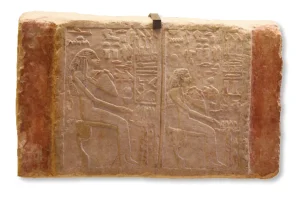
This Old Kingdom stela from the Louvre is the earliest artefact found to have traces of orpiment colouring. Image: Rama, CC BY 3.0
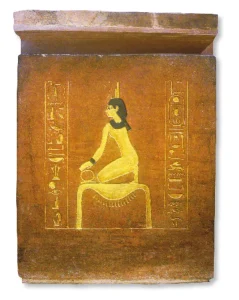
The sarcophagus of Amenhotep II with the image of a kneeling Isis coloured in bright yellow paint created using orpiment. Question. Stylized 'M'?
Orpiment as a possible decorative element is found on the kilt of a wooden ‘guardian’ figure from the Twelfth Dynasty, which was found in the non-royal tomb of Imhotep, a ‘Royal Sealer’. Orpiment in this case was not used to portray the golden skin, but to accent the clothing of the deity....The use of realgar is found on significantly fewer objects during this period. Orpiment’s close symbolic analogy with pure gold and the sun may be the basis for its greater use, although neither of these pigments were in general use. Realgar has been found associated with other pigments on the walls of the royal tomb of Amenhotep III. Pure realgar has been found primarily in the Book of the Dead papyri, and orpiment and realgar have been separately identified on the same papyri, especially in the colouring of striped borders and on associated textual figures. Mixtures of orpiment and realgar were found by researchers in a tomb painting in the skin tones of a high official, Menna, and his wife Henuttawy (Tomb TT69), during the time of Amenhotep III.
After Amenhotep III
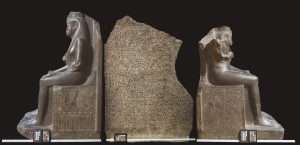
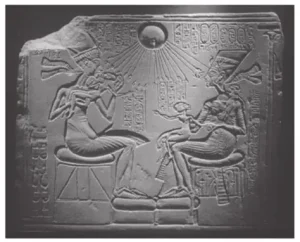
House Altar depicting Akhenaten, Nefertiti and Three of their Daughters, c. 1350 B.C.E. On limestone. Question. What are EACH sat on?
The discovery of orpiment and realgar on multiple types of objects continued with archaeological finds from the Amarna Period through to the Ptolemaic Period. The pigments were used alone, or layered or mixed with ochre or other pigments, and used on walls, objects, and papyri at sites such as Amarna, and in the Tomb of Tutankhamun. At Amarna, an outstanding example of the use of orpiment on statuary is found on the bright yellow headband of the famous bust of Nefertiti. ['Ancient Egypt' / 2023].
The royal sealer, also called royal seal-bearer,[1] (Ancient Egyptian: ḫtmty-bỉty) was an Ancient Egyptian official position and title. The name literally means "sealer of the king of Lower Egypt," but it seems unlikely that the position was ever geographically limited.[2] In the Early Dynastic period and Old Kingdom, it was one of the most important positions in Egypt. The bearer seems to have headed the treasury and had significant symbolic power as an official representative of the Pharaoh. As a "ranking title," it indicated the bearer's pre-eminence in court. In the late Middle Kingdom, it was revived as a ranking title borne by many of the highest officials in the court. This apparently coincided with an increased prominence of seals in the Egyptian administration, as part of a centralisation of the bureaucracy. The title spread more widely in the Second Intermediate period, diluting its power.
Side note: ''The White Chapel is made of limestone. Its columns hold reliefs of a very high quality, which are hardly seen elsewhere at Karnak, and depicts Pharaoh Senusret being crowned {Jubilee link} and embraced by Amun, Horus, Min and Ptah. All along the base of the outer walls runs a series of reliefs depicting the emblems and deities of the nomes, or provinces, of Egypt. On the western side are the nomes of Upper Egypt, and on the eastern side are the nomes of Lower Egypt.''
What about North and South?
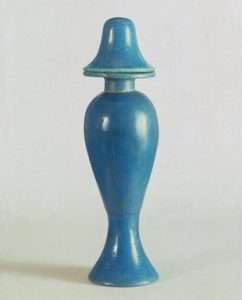
Ritual vessels known as hes-vases were commonly used in temple rituals of purification and in libations, or liquid offerings, which the priest poured to the gods. Their shape resembles the hieroglyph hes, which can mean “to favor” or “to praise.”
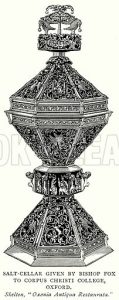
Salt-Cellar given by Bishop Fox to Corpus Christi College, Oxford. Illustration from A Short History of the English People by J R Green (Macmillan, 1892).
''The chapel was used as a sacred shrine by pharaoh kings such as King Amenemhat III and King Amenemhat IV, where the chapel was converted into a mausoleum in the 18th Pharaonic dynasty. An altar was found inside the White Chapel of pink granite stone dating from the 18th dynasty.''
Side note: Again I beheld the divine and holy bowl-shaped altar, and I saw a priest clothed in a white robe reaching to his feet, who was celebrating these terrible mysteries, and I said: “Who is this?” And the answer came: “This is the priest of the inner sanctuaries. It is he who changes the bodies into blood,
makes the eyes clairvoyant, and raises the dead.” Then, falling again to earth, I again fell asleep. And as I was ascending the fourth step, I saw, to the east, one approaching, holding a sword in his hand. And another [came] behind him, bringing one adorned round about with signs, clad in white and comely to see, who was named the Meridian of the Sun. And as they drew near to the place of punishments, he who held the sword in his hand [said]: “Cut off
his head, immolate his body, and cut his flesh into pieces, that it may first be boiled according to the method, and then delivered to the place of punishments.” Thereupon I awoke and said: “I have well understood, this concerns the liquids in the art of the metals.” And he who bore the sword in his hand said again: “You have completed the descent of the seven steps.” And the other answered, as he caused the waters to gush forth from all the moist places: “The procedure is completed.” (III, vi, 1.) And I saw an altar which was in the shape of a bowl, and a fiery spirit stood upon the altar, and tended the fire for the seething and the boiling and the burning of the men who rose up from it. And I inquired about the people who stood there, and I said: “I see with astonishment the seething and the boiling of the water, and the men burning and yet alive!” And he answered me, saying:
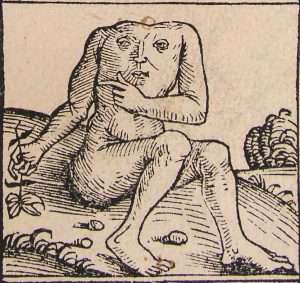
Remedy?
“This boiling that you see is the place of the operation called embalming. Those who seek to obtain the art enter here, and they cast their bodies from them and become spirits. The practice [of the art] is explained by this procedure; for whatever casts off the grossness of the body becomes spirit.” The Zosimos texts are in a disordered state. At III, i, 5 there is a misplaced but obviously authentic résumé or amplification of the visions, and at III, i, 4 a philosophical interpretation of them.
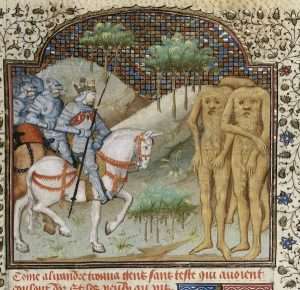 Zosimos calls this whole passage an “introduction to the discourse that is to follow” (III, i, 6). (III, i, 5.) In short, my friend, build a temple from a single stone, like to white lead, to alabaster, to Proconnesian marble, with neither end nor beginning in its construction. Let it have within it a spring of the purest water, sparkling like the sun. Note carefully on what side is the entrance to the temple, and take a sword in your hand; then seek the entrance, for narrow is the place where the opening is.....
Zosimos calls this whole passage an “introduction to the discourse that is to follow” (III, i, 6). (III, i, 5.) In short, my friend, build a temple from a single stone, like to white lead, to alabaster, to Proconnesian marble, with neither end nor beginning in its construction. Let it have within it a spring of the purest water, sparkling like the sun. Note carefully on what side is the entrance to the temple, and take a sword in your hand; then seek the entrance, for narrow is the place where the opening is.....
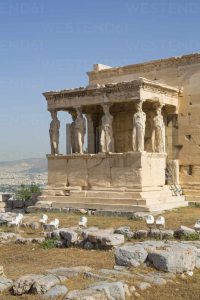
Temple of Athena Nike, Acropolis, UNESCO World Heritage Site, Athens, Greece, Europe
A dragon lies at the entrance, guarding the temple. Lay hold upon him; immolate him first; strip him of his skin, and taking his flesh with the bones, separate the limbs; then, laying [the flesh of] the limbs together with the bones at the entrance of the temple, make a step of them, mount thereon, and enter, and you will find what you seek. The priest, that brazen man, whom you see seated in the spring and composing the substance, [look on] him not as the brazen man, for he has changed the colour of his nature and has become the silver man; and if you will, you will soon have him [as] the golden man. (III, i, 4.) And after I had seen this apparition, I awoke, and I said to myself: “What is the cause of this vision? Is not that boiling white and yellow water the divine water?” And I found that I had well understood.

In the pink of health. A regenerated {'resurrected'?} Tutankhamun? From Aten to amun?
And I said: “Beautiful it is to speak and beautiful to hear, beautiful to give and beautiful to receive, beautiful to be poor and beautiful to be rich. How does nature teach giving and receiving? The brazen man gives and the hydrolith receives; the metal gives and the plant receives; the stars give and the flowers receive; the heavens give and the earth receives; the thunderclaps give forth darting fire. And all things are woven together and all things are undone again; all things are mingled together and all things combine; and all things unite and all things separate; all things are moistened and all things are dried; and all things flourish and all things fade in the bowl of the altar. For each thing comes to pass with method and in fixed measure and by exact weighing of the four elements.

“Most certainly, I tell you, one who doesn’t enter by the door into the sheep fold, but climbs up some other way, is a thief and a robber."
The weaving together of all things and the undoing of all things and the whole fabric of things cannot come to pass without method {'wool', cotton or 'linen'?}. The method is a natural one, preserving due order in its inhaling and its exhaling; it brings increase and it brings decrease. And to sum up: through the harmonies of separating and combining, and if nothing of the method be neglected, all things bring forth nature. For nature applied to nature transforms nature. Such is the order of natural law throughout the whole cosmos, and thus all things hang together.” (III, i, 6.) This introduction is the key which shall open to you the flowers of the discourse that is to follow, namely, the investigation of the arts, of wisdom, of reason and understanding, the efficacious methods and revelations which throw light upon the secret words. ['Alchemical Studies' / C. Jung].
REFRESHER: "The relationship of these two pairs of zodiacal constellations to the Milky Way is not affected by precession and never changes. Gemini and Taurus will always mark the northern 'gate' of the Milky Way and Sagittarius and Scorpio will always mark the southern 'gate' of the Milky Way. Of the two, however, it is the later pairing that is the most important, because it so happens that the part of the Milky Way seen through this gate as we look up at the night sky forms the very center and heart of our galaxy..." {+ black hole and dark rift links}. ['Magicians of the Gods'. Page 314].
Some fish as most cultures know... swim/travel back to their original source as part of their life's journey, especially esotericism's favorite fish. The Salmon. This journey is the crux of all the same lore. Why?
6....Not only, [ implied by the same authors ] is A to B possible, but once in [B] a further transition is possible. From B to ‘C’. Represented with the Salmon in some esoteric lore [ North American Indians ], or as with the Sumerians the 'figure' of Oannes,[half man,half fish]. Or ‘The Twelve Gates of the duat’ in Egyptian lore and/or...’The book of the dead’. [For 1 - 5, see part 2 ].
Explained by such authors as N.Ellis. ’Awakening Osiris’, [i.e., relative to what 'thirteen' represents]. Or the Sumerian equivalent...The word ‘Til..mun.’ Or Heaven, hell and limbo of Christian lore. [ Heaven equals an analogy to the 'top level’ [C].
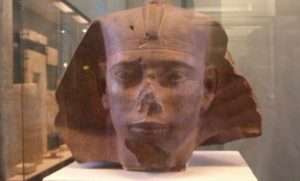
He is the king who introduced the royal title Sa-Rê (meaning “Son of Ra”) and the first to connect his cartouche name with the sun god Ra.
In the old testament ‘C’ is represented by the concept of... ‘The new Jerusalem’. An indirect/direct link to the word ‘Zion’. [ Depending on author ]. Or in the new testament by the word ‘Resurrection’. Its physical 'representation', to those in the know i.e., Shamans [if only in relation to the start of that 'next leg' ], being the 'system of Sirius'. Known as 'the land of the fish'. Think about it it relation to the 'Pole star'. The 'gateway' to the next 'life'. What that same tribe call...'The navel of the world'. ['Sirius Mystery']. Symbolic of, only.
Side note: According to Homer, the star Sirius was named after a dog. In Greek mythology, both Orion and Sirius were mentioned as stellar formations in Homer’s Odyssey. Orion, a giant and skilled huntsman, had a loyal hunting dog named Sirius. Even after death, Sirius faithfully followed Orion across the sky, immortalized as the brightest star in the constellation Canis Major, also known as the Great Dog1. So, yes, the nose of the dog is indeed Sirius!
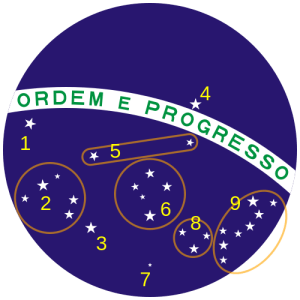
A list of constellations and stars on the map:
1: Procyon (α Canis Minoris)
2: Canis Major: five stars, the largest depicting Sirius
3: Canopus (α Carinae)
4: Spica (α Virginis)
5: Hydra: two stars, the larger being Alphard
6: Crux Australis: five stars, the largest depicting Alpha Crucis
7: Sigma Octantis (σ Octantis, south pole star)
8: Triangulum Australe: three stars of similar size
9: Scorpius: eight stars, the largest depicting Antares. Question. Stylized 'W'?
Continued: "It seems that a very ancient doctrine relating to the spring-equinox node's movements with precession was later co-opted into the nodal ''planets'' of Rahu and Ketu, [enlarged elsewhere}, thus allowing the 'apocalyptic' imagery...At least we can say that Sagittarius - {3 degrees} - in ancient Islamic sources is the location of something amazing, something that over the centuries was kept secret." ['Galactic Alignment'].
The main point however, is ’C’ is not a part of ‘B’, [only in part, not whole, explained within]... it is beyond ‘B’. What ever that implies.
"Isis is the star that rises from the twilight Sea, the star that itself is the symbol of the divine spark in man. The Egyptians called it Sothis, we call it Sirius. When the star is 'unveiled' {heliacal rising?} and brightly burning within the human soul, then conscious touch with the Isis of nature becomes fully possible." [Chapter 4, 'The Forgotten Mage'. Mentioned elsewhere]. That ''conscious'' aspect [within landscape symbolism] represented with S/E. Understanding that universal framework defines that statement. The real question however is ...sense or non-sense. A possibility or not?
Question. If A/B co-exist, what happens to 'B' when 'A' no longer exists? Science informs us that someday the physical world/universe [ 'A' ], will no longer exist. Can something 'exist' without its 'partner'? In other words could 'B' exist on its own? If not what does that imply. "End of days"? Hence that link to the Greek use of describing the 'afterlife' as 'Millions of years', instead of 'eternal'. Therefore do we have to be somewhere, before that event happens? i.e., 'C'. That logic again. Or is it nothing more than a fairy story?
 "The ancients of various cultures also tended to believe in degrees of immortality, such that, for instance, angels might "fall" and gods like Cronus, the father of Zeus, could be imprisoned in sleep as if dead. Immortality is not as simple as you might think, nor is eternity necessarily absolute in all traditions. After all, even in our daily lives we all say to one another, "I will always love you," or "I will love you forever," or "I will never forget," despite our statements being literally impossible". Everyone, even in religion, is entitled to exaggerate, in order to make a point from time to time". [Chapter six. 'The Sphinx Mystery'. R. Temple].
"The ancients of various cultures also tended to believe in degrees of immortality, such that, for instance, angels might "fall" and gods like Cronus, the father of Zeus, could be imprisoned in sleep as if dead. Immortality is not as simple as you might think, nor is eternity necessarily absolute in all traditions. After all, even in our daily lives we all say to one another, "I will always love you," or "I will love you forever," or "I will never forget," despite our statements being literally impossible". Everyone, even in religion, is entitled to exaggerate, in order to make a point from time to time". [Chapter six. 'The Sphinx Mystery'. R. Temple].
"All men are asleep. They only wake up when they die." [Traditional wisdom, quoted by Muhammad. Taken from chapter 25, 'The Sacred History'].
As {one} example: ''In this manner may those understand them, who awake from sleep of forgetfulness, deliver themselves from the sea of ignorance, and raise themselves upward..." [Page 166 'Guide for the Perplexed'].
Follow the title of the book to 'see' it in its broader view.
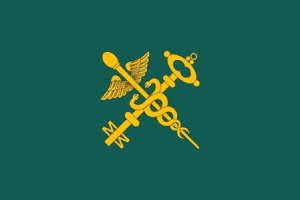
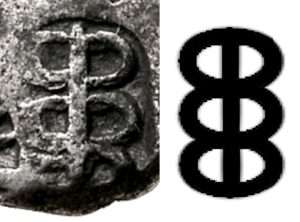 In short they all imply that each individual is on his/her own personal journey, as part of the possible purpose within the ‘design’. Working their way back to that original state/source...by way of an understanding; an inner one. Which again has a certain logic to it. In relation to making use of something once aware.
In short they all imply that each individual is on his/her own personal journey, as part of the possible purpose within the ‘design’. Working their way back to that original state/source...by way of an understanding; an inner one. Which again has a certain logic to it. In relation to making use of something once aware.
How? The thinking process they imply. Mainly referred to...by way of ‘intuition; or 'intuitive faculty’, [ explained elsewhere ]... is more relevant in B and C than A. Especially in relation to B-C...and especially in relation to ones ‘new self’. [ New bod. Explained within].
As explained symbolically in the ‘Emerald Tablet’. No better book for an abundance of ‘information’ will be found in Dennis Haucks. ’Emerald tablet’. Especially when cross referenced with other works. [ ‘Emerald’; in its most basic form; symbolic of the ’new self’. The ‘One thing’ representing the ‘mind’, by way of the 'divine bit'. Think about it].
 That familiar subject again. The understanding of the inner self, [ higher/lower ] in relation to A and B ...helps with the B-C. That ‘development’ mainly represented with the serpent symbol. A direct link to the Eastern word ‘Chakra’, i.e.,''the eyes of the soul''. [Chapter 22, 'Secret History of the World']. Put ''eye'' in the usual box.
That familiar subject again. The understanding of the inner self, [ higher/lower ] in relation to A and B ...helps with the B-C. That ‘development’ mainly represented with the serpent symbol. A direct link to the Eastern word ‘Chakra’, i.e.,''the eyes of the soul''. [Chapter 22, 'Secret History of the World']. Put ''eye'' in the usual box.
"...Intuition is the aim and the result of the process of a stepwise convergence between the subject and object of knowledge - it is their blending into a unity. Intuition is the knowledge that results from the unifying of subject and object after having passed through the stages of objective consciousness, imaginative consciousness, and inspired consciousness." [Introduction to the book 'Lazarus Come Forth' by V. Tomberg].
Understanding the subjective benefits of an objective exercise - in relation to understanding [as an example] any subject; especially this one - defines that statement. That link to ''Guardian at the gate" i.e.,that mental process we use to define anything - including understanding the difference and purpose [ and therefore benefit] of objectivity in relation to subjectivity.
'On Having No Head: Zen and the Rediscovery of the Obvious' / D. E. Harding.

Mount Athos. N/E - as a representation of something. REGARDLESS of culture. Beginning's of.
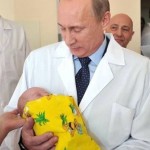
Objective or contrived? Work in progress? . Others elsewhere. Question. What would his mum/dad think?
"...for everything that takes place in subjective intimacy will one day become objective reality. It is the 'magical' law of history that the subjective at some time becomes objective; that the aspirations, thoughts and feelings of today become the events of history tomorrow." [Extract from the book by Tomberg]. Link to the word ''hindsight''. Benefit of, i.e.,understanding the past, gives us an [idea?] as to who or where we are in the present? 'Past' together with 'present' = idea of future? Think on it relative to the contents of a subject - together with the same word as mentioned in Part 1.
'On Having No Head: Zen and the Rediscovery of the Obvious' / D. E. Harding.
'Russia: Past, Present and Future' / Rudolf Steiner.
"Also the aim of Indian Yoga - namely Samadhi - corresponds to 'intuition', as the condition in which the knowledge of subject and object become one. The preceding two stages of 'higher' knowledge - dharna and dhyana - are stages of the drawing closer of the subject to the object that; if not identical with the stages designated as 'imaginative' and 'inspired' consciousness - are at least analogous to them. The way to intuition according to the various spiritual streams and authors may well be different, but all are in agreement that intuition is not attained through practical knowledge or intellectual consideration, but through direct experience of reality. This 'highest' form of knowledge is an ''evolving revelation from the inner being of man,'' as Goethe designated it, and a ''direct grasping of the being of things,'' according to Spinoza." [Same book].
'On Having No Head: Zen and the Rediscovery of the Obvious' / D. E. Harding.
"...Is it knowledge [gnosis] or faith [pistis] that is the source of this certainty? It is the certainty of inwardly revealed truth, which makes itself known as such, in relation to which all soul forces of the human being i.e., thinking, feeling and willing - together say ''yes.'' Link to a 'eureka' moment. Representation of.
Refresher..."Got to see it, rather than just read it..." John Humphrys talking to D. Tennant and Greg Doran in relation to the plays by W. Shakespeare. [400th anniversary. Radio 4. 23/04/16].
Question. Was Shakespeare aware of this subject? Question 2. Would he apply it?
"The true voyage of discovery, lies not in seeking new landscapes, but in having new eyes." Marcel Proust.
As seen {explained?} from a different perspective: "When, however, the word ''eye'' is connected to the verb ''to see'' {raab or hazah} as in - "open thine eyes and 'see'...." {1 Kings xix.16}; ''His eyes behold'' {Ps xi.4}, - the phrase denotes the perception of the mind, not that of the senses." [Chapter XLIV 'Guide for the Perplexed].
"The word translated as faith [pistis] in the New Testament means more than belief. It means another kind of thinking.'' [Part three. 'The Mark'. Mentioned elsewhere].
The Greeks [Plato] referred to those three universal aspects as 'pistis' 'dianoia' and 'noesis', i.e.,...
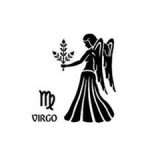 "In addition to pistis and dianoia there was also a third faculty - intuition. This Plato called noesis, and it was thought of as the highest expression of all human mental faculties when working as a well trained team. It is often confused with instinct and with feeling. We all know the person who says: 'I have an intuition; I feel it in my bones.' But the noesis of the ancient Mysteries was something much more than this for it was a faculty of comprehending those 'great universal ideas of which the manifested universe is a differentiated and objective expression'. It is the UNfallen Sophia; it is a wisdom that is beyond all earthly wisdom." [Chapter 5, 'The Forgotten Mage' by C. Seymour].
"In addition to pistis and dianoia there was also a third faculty - intuition. This Plato called noesis, and it was thought of as the highest expression of all human mental faculties when working as a well trained team. It is often confused with instinct and with feeling. We all know the person who says: 'I have an intuition; I feel it in my bones.' But the noesis of the ancient Mysteries was something much more than this for it was a faculty of comprehending those 'great universal ideas of which the manifested universe is a differentiated and objective expression'. It is the UNfallen Sophia; it is a wisdom that is beyond all earthly wisdom." [Chapter 5, 'The Forgotten Mage' by C. Seymour].
The cheerful brilliance of the morning lent youth to Earth's old bones, touched the peak with gold, gleamed along the river and put the gardens en fete..." ['Her-Bak'].
Flip side?..."Ptolemy personifies Sophia's ignorance as the fallen Goddess figure Achamoth. Ejected from the 'Pleroma', she is pictured 'alone' in the darkness of the..." [From the book by T. Freke and P. Gandy]. Black Madonna = Hermetic equivalent - as a means to represent something...
"...the 'nails' of objectivity - which give conscience to thought."
The symbol of which is the Crown of Thorns, i.e.,"The 'thorns' of the crown center function as the 'nails' of objectivity..." [Taken from 'letter 5' from within the book by Tomberg].
'Queen of Thorns'? [Game of Thrones].
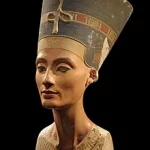
Consummated?
 A working example: while recalling the difference between the Eastern Way and Western Way: ''It is said that Samadhi, or trance, no more than opens the portal of the spiritual realm. Sri Ramakrishna felt an unquenchable desire to enjoy 'god' in various ways. For his meditation he built a place in the NORTHERN WOODED section of the temple GARDEN...He planted there five sacred trees {Bel-tree?}. The spot, known as the Panchavati {spotless?}, became the scene of many of his visions...And/or: ''The awakening of the kundalini is the beginning of spiritual consciousness, and its union with Siva in the Sahasrara {i.e., 7th crown chakra}, ending in samadhi, is the consummation of the tantrik disciplines {i.e., sixtyfour principle books}.....And/or: ''When a seeker merges in the beatitude of samadhi, he does not perceive
A working example: while recalling the difference between the Eastern Way and Western Way: ''It is said that Samadhi, or trance, no more than opens the portal of the spiritual realm. Sri Ramakrishna felt an unquenchable desire to enjoy 'god' in various ways. For his meditation he built a place in the NORTHERN WOODED section of the temple GARDEN...He planted there five sacred trees {Bel-tree?}. The spot, known as the Panchavati {spotless?}, became the scene of many of his visions...And/or: ''The awakening of the kundalini is the beginning of spiritual consciousness, and its union with Siva in the Sahasrara {i.e., 7th crown chakra}, ending in samadhi, is the consummation of the tantrik disciplines {i.e., sixtyfour principle books}.....And/or: ''When a seeker merges in the beatitude of samadhi, he does not perceive 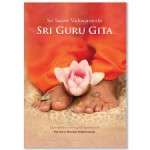 time and space or name and form, the offspring of Maya. Whatever is within the domain of maya is unreal. Give it up. Destroy the prison house of name and form and rush out with the strength of a lion. Dive deep in the search of the Self and realize it through samadhi. You will find the world of name and form vanishing into a void, and the puny ego dissolving in Brahman-consciousness. You will realize you true identity....'' [Introduction {15/18/28} 'The Gospel of Sri Ramakrishna' / Ramakrishna Vivekananda Center].
time and space or name and form, the offspring of Maya. Whatever is within the domain of maya is unreal. Give it up. Destroy the prison house of name and form and rush out with the strength of a lion. Dive deep in the search of the Self and realize it through samadhi. You will find the world of name and form vanishing into a void, and the puny ego dissolving in Brahman-consciousness. You will realize you true identity....'' [Introduction {15/18/28} 'The Gospel of Sri Ramakrishna' / Ramakrishna Vivekananda Center].
Side note: Lleu Llaw Gyffes (Welsh pronunciation: [ˈɬɛɨ ˈɬau ˈɡəfɛs], sometimes incorrectly spelled as Llew Llaw Gyffes) is a hero of Welsh mythology. He appears most prominently in the Fourth Branch of the Mabinogi, the tale of Math fab Mathonwy, which tells the tale of his birth, his marriage, his death, his resurrection and his accession to the throne of Gwynedd. He is a warrior and magician, invariably associated with his uncle Gwydion.
He is widely understood to be the Welsh equivalent of the Irish Lugh and the Gaulish Lugus. It has been suggested that Lleu, like Pryderi, is related to the divine son figure of Mabon ap Modron.[1]

'Grip' to enlarge.
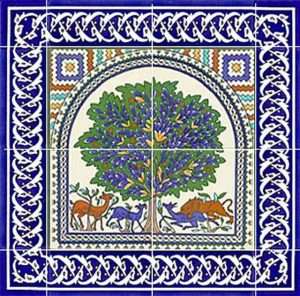
'Steady' = grip?
Continued: ''Nirvikalpa samadhi is the second stage of samadhi, a meditative state of total absorption and bliss. Samadhi is the eighth and final step on the path of yoga, as defined by Patanjali’s Yoga Sutras.The term is derived from several Sanskrit roots; sam meaning "together" or "completely" a meaning "toward" and she, meaning "put."
Direct translations vary, and interpretations range from "bliss" to "liberation" and even "enlightenment." Nirvikalpa can be translated from Sanskrit as "not wavering," highlighting the fact that this stage of samadhi is sustained and steady.
Nirvikalpa Samadhi is a higher state of awareness where the ego and samskaras have been dissolved and only Consciousness remains. Patanjali says the material world has become like a shadow from which you are completely free. In Nirvikalpa Samadhi there is no mind as you know it—there is only infinite peace and bliss.''
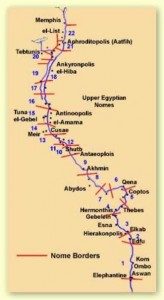
Where within a landscape would that be REPRESENTED?
 Put all the above together to define..."Ptolemy personifies Sophia's ignorance as the fallen Goddess figure Achamoth. Ejected from the 'Pleroma', she is pictured 'alone' in the darkness of the Kenoma. Achamoth represents Consciousness or 'spiritual essence' that has identified with 'appearances'. To liberate this consciousness, Christ sets in motion a 'rescue' operation of truly cosmic proportions. Christ stretches out along the cross {horizontal/vertical links} WHICH DIVIDES the 'pleroma' from the 'kenoma' and wakes the lost Achamoth from her spritual sleep so that she experiences metanoia and begins to search for the light of the pleroma, her original home {bottom up?}. " [From the book by T. Freke and P. Gandy].
Put all the above together to define..."Ptolemy personifies Sophia's ignorance as the fallen Goddess figure Achamoth. Ejected from the 'Pleroma', she is pictured 'alone' in the darkness of the Kenoma. Achamoth represents Consciousness or 'spiritual essence' that has identified with 'appearances'. To liberate this consciousness, Christ sets in motion a 'rescue' operation of truly cosmic proportions. Christ stretches out along the cross {horizontal/vertical links} WHICH DIVIDES the 'pleroma' from the 'kenoma' and wakes the lost Achamoth from her spritual sleep so that she experiences metanoia and begins to search for the light of the pleroma, her original home {bottom up?}. " [From the book by T. Freke and P. Gandy].
Question. Shadow or anima? as the start point of a 'learning curve' {key,i.e.,'arc'}.
'Intuitions' main symbol the 'flower'; several of which are represented within the spinal column [kundalini] in the guise of a 'serpent' as it is with the Phaistos Disk. A 'coiled' snake. [key. i.e.,symbolic of a potential that could lead to something 'eternal'. Chapter two.'The cult of Ra'. By S. Quirke ]. Eastern tradition places that 'development' at the base of the spine. Remember symbolic only. It represents an awareness/development of something. Hence the link to the word 'coiled', and therefore by the same implication the use of the 'serpent/snake' as representation of that 'development',i.e.,more often than not, snakes when 'coiled'...indicate something 'asleep'/dormant. Thinking time, i.e., the more aware, the less 'coiled'.
A direct link to the Egyptian equivalent...the Djed Column. The spine of Osiris, [explained elsewhere]. To ‘unravel ’ its meaning...understand this subject.

A list of constellations and stars on the map of Brazil:
{1} Procyon (α Canis Minoris)
{2} Canis Major: five stars, the largest depicting Sirius
{3} Canopus (α Carinae)
{4} Spica (α Virginis)
{5} Hydra: two stars, the larger being Alphard
{6} Crux Australis: five stars, the largest depicting Alpha Crucis
{7} Sigma Octantis (σ Octantis, south pole star)
{8} Triangulum Australe: three stars of similar size
{9} Scorpius: eight stars, the largest depicting Antares. Question. Large 'W' below. 'M' above?
Thinking cap time...Snakes move in the 'horizontal' but can strike/lunge/hiss and spit in the 'vertical' - especially the Cobra. Anything? Also the 'hood' of the Cobra in the 'vertical' {striking?} position - in relation to the 'hood' of the Sphinx in the 'horizontal' one? Try Venom / antivenom? And/or 'poison'{ous}. What do they imply relative to the whole?

'Male' or 'female' cone? or does it matter?
"Kundalini is a word that has fascinated thousands of people. Most people who have only a rudimentary knowledge of yoga or mysticism talk of kundalini- and what fantastic and sometimes downright silly ideas come forth. Some think it to be a mysterious force linked to black magic and the orgies of kapalic tantrics. Others, well educated in matters of human anatomy and physiology but, who unfortunately have not studied either the relevant texts or have not been guided by a 'spiritual' teacher, proclaim that it is nothing but a nerve, right vagus nerve, for instance. There are others who say that the kundalini and the centers through which it moves are all on the 'astral' or some such plane and even paint it in fantastic technicolours, which they consider as better than the diagrammatic representation of the chakras...... We shall not go into the many details regarding the number of 'petals' of each chakra, the colour, purpose, etc.[ authors having a joke]. Such 'details' are not important....
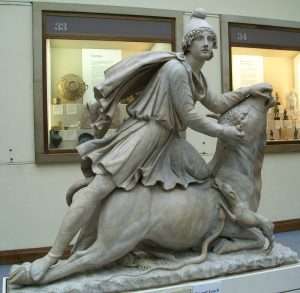
Dog {Sirius i.e., dog star}. Scorpion {Scorpio}. Snake {Ophiuchus}?
And those who are interested can find them in the Sanskrit originals or in the excellent translations available, like Sir John Woodroff's 'Serpent Power'.........Now to the bare essentials of Kundalini yoga. The kundalini is represented as a spiritual force or energy, symbolised by a serpent, which remains 'sleeping' or inactive, in a potential stage, like a coiled spring in all human beings, male or female, at the extreme lower end of the spine called muladhara chakra." [Chapter 9, 'Deeper Aspects of Hinduism' [Jewel in the Lotus] by Mumtaz Ali]. To evaluate correctly find other aspects, [from differing cultures] but defining the same principle. Put ''spine'' or ''staff'' in the box. Before asking yourself that bigger question. Why. Why go to all this effort?
From a different perspective: ''And this 'something' they then for the first time called the 'organ kundabuffer'....'' [Page 85 'Beelzebub's Tales to his Grandson' / Gurdjieff].

"He is the king who introduced the royal title Sa-Rê (meaning “Son of Ra”) and the first to connect his cartouche name with the sun god Ra." Nose?
''The 'eyes of the soul' of which St. Teresa speaks are what we call in modern Hermeticism the 'lotus flowers' or simply 'lotuses', and what Hindu yoga names 'chakra centers' or 'chakras'." Question. Was St. Teresa in 'commune' with her kundalini?
Define {'see'} the above to get an idea {''hang on''?} - the following: The Cerrigydrudion Crown. A Celtic piece of ancient artwork. Bronze {'red'?} and leather {'cow'?] headpiece. ''Possibly signifies 'warrior' headgear - with palm leaf and lotus designs - neither of which are common to these islands {UK}.'' ['Inside Museums: St. Fagan/Cardiff. Sat.TV].
A working example: Recall Odysseus journey back to his homeland. Lotus island being its 'first stage'.
'Spirit/Soul' - as a means....?
Question. What would ''hang on'' be represented with - if anything?
Refresher: "...but if you are armed with the 'wand' of intuition, the 'cup' of sympathy, the 'sword' of reason and the 'pentacle' of valor, you will find there {the legends say} the Medicine of Metals, the Elixir of Life, the Philosophers Stone, True Wisdom and perfect happiness." [Extract from the book 'The Cosmic Trigger' by R. Wilson. Emphasis, this readers].

Found on Oak island. Pine related. '13' branches. Three 'spiral' levels. Made from two entwinned threads. A feather in the CAP?
A more practical definition?: "The alchemical process is said to be one of sublimation. To sublime anything is to elevate it, to lift it up. The Hindus teach that power is coiled in the sacral plexus, and they call this 'power' Kundalini, the coiled serpent. Yoga practice is intended to lift this power from the 'lower' centers to the 'higher' ones, until at last it energizes the pineal body. In like manner alchemists talk about the 'raising of the metals' from Lead to Iron, from Iron to Tin, from Tin to Copper, from Copper to Silver, from dead Silver to living Silver {'quick' in ''quick Silver'' means living}. And then the sublimated Mercury is turned into Gold. What does this mean? Just exactly what the Hindus mean by the raising of the Kundalini. A release of the energies 'stored' in lower centers, and a change in their rate of vibration to that of the higher centers, accompanied by corresponding changes in consciousness...."
 Question. Is not the above a description of a learning process from something unknown {lower centers} to becoming known {higher ones}. A step by step process. Hence the words in bold print too: ''A Gnani is a Yogi who develops 'superconsciousness' by the method known as ''union by means of knowledge'' i.e.,as one example the Kabbala or Secret Wisdom of Israel, is really a mode of Gnana Yoga''. Hence....
Question. Is not the above a description of a learning process from something unknown {lower centers} to becoming known {higher ones}. A step by step process. Hence the words in bold print too: ''A Gnani is a Yogi who develops 'superconsciousness' by the method known as ''union by means of knowledge'' i.e.,as one example the Kabbala or Secret Wisdom of Israel, is really a mode of Gnana Yoga''. Hence....
 '' One thing I can tell you. The 'current' is not turned on by any practice of concentration upon centers in the physical body....Neither do you ''raise the Kundalini'' by any effort of the personal Will....How are you to do this? The place to begin is with your intellect. You have to reason out for yourself the truth of the doctrine that you are a center of expression for the One Life-Power, which does all things through you {that universal ''bit''?}. You have to 'see' that the logical consequence of this fact is a certain mental attitude toward that 'life power'.
'' One thing I can tell you. The 'current' is not turned on by any practice of concentration upon centers in the physical body....Neither do you ''raise the Kundalini'' by any effort of the personal Will....How are you to do this? The place to begin is with your intellect. You have to reason out for yourself the truth of the doctrine that you are a center of expression for the One Life-Power, which does all things through you {that universal ''bit''?}. You have to 'see' that the logical consequence of this fact is a certain mental attitude toward that 'life power'.

Isle of Man also has same. 'Tripod' to enlarge.
The mental attitude is summed up in a single word, RECEPTIVITY, and it is indicated by the cup-shaped crescent at the top of the Mercury symbol.'' [Pages 20/45 'Occult Fundamentals and Spiritual Unfoldment. Vol 1].
As in a study program?
Side note: The ''Bent Pyramid'' has two chambers below and one above. {higher/lower}.
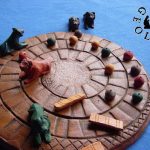 Continued: "More than one researcher has noted the similarity between the marks found on these 'tjuringas' {Aborigine} and those found at megalith sites: in particular the curious cup and ring markings discovered at a large number of sacred places but never satisfactory explained." [Page 58 'The Western Way' / C+J Matthews].
Continued: "More than one researcher has noted the similarity between the marks found on these 'tjuringas' {Aborigine} and those found at megalith sites: in particular the curious cup and ring markings discovered at a large number of sacred places but never satisfactory explained." [Page 58 'The Western Way' / C+J Matthews].
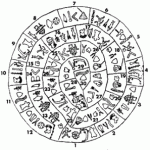
Snake form. As a means....?
Found on the Island of Crete. That same place where Zeus was ‘born’. South of a mainland. A new one. All those same esoteric keys; on the same subject; within such books as...’Knossos’. By R.Rossi. i.e.,Theseus ‘coming to terms’ with his lower self, [ Minotaur.Remaining ’lower’ bit ] symbolic of...by way of... an inner awakening. [ Labyrinths ], i.e., from an unconscious, 'Lower’ start. [i.e., 'shadow' aspect].
Chapter 5. The Dancing Maze, within the book 'Cities of Dreams' by Stan Gooch.
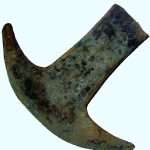
Hoe/Axe money. Aztec currency. Same 'form' found on the exterior of the Sarsen Stones at Stone-henge and scattered throughout on Easter Island. Coincidence?
All of which represented with the ‘sacred’ Double axe. [i.e., named Labrys, from which the word labyrinth originates]. A styalized copper cross, [biblical equivalent, the 'bronze serpent' of Exodus fame]. A link to the horizontal/vertical or above/below, [ explained elsewhere ]. See also 'The Riddle of the Sphinx'. C. Herberger. [Chapter two].
'The Gardner's Labyrinth'. The first popular gardening book within these Isles, [i.e., GB].
Joyous Garde? Try Part 5. [''Grace'' link?].
 Practical/working example: ''Hello everyone. Hope you are all well. You may be asking yourself while you are watching this: 'Why is Callie so happy and smiling? How can she be so in the cold freezing Artic. Should'nt she be cold and miserable? Well i have a secret - its K. G. Sparkle'. I have a sister who is amazing and hilarious. Those are magic words....whenever she hears them she laughs hysterically for a good twenty minutes. So if i think of K.G. Sparkle i hear her laugh - and that makes me so happy. So if i ever get down i just sprinkle a little K.G. Sparkle on it and it becomes all good." {Callie/'Alone'/2020}.
Practical/working example: ''Hello everyone. Hope you are all well. You may be asking yourself while you are watching this: 'Why is Callie so happy and smiling? How can she be so in the cold freezing Artic. Should'nt she be cold and miserable? Well i have a secret - its K. G. Sparkle'. I have a sister who is amazing and hilarious. Those are magic words....whenever she hears them she laughs hysterically for a good twenty minutes. So if i think of K.G. Sparkle i hear her laugh - and that makes me so happy. So if i ever get down i just sprinkle a little K.G. Sparkle on it and it becomes all good." {Callie/'Alone'/2020}.
 "Something to ponder on: "The 'sticks' carried by the Fool represent the Etheric body of the fool. This symbolism is sustained by the fact that sticks are cut from trees: according to arcane tradition, the vegetative life of trees and plants is supported by the Etheric energies. This is why one of the terms for the Etheric, used in mediaeval hermetic thought, was ens vegetabilis - or the 'vegetable essence'...The Etheric, or vegetabilis, is symbolized by a flowering plant...In Latin, the stick is virga - a sound close enough to virgin, to suggest another role of the stick as a 'fertilizer of ideas'..." ['The Zelator']. Try ''vegetable'' and/or its variations etc.
"Something to ponder on: "The 'sticks' carried by the Fool represent the Etheric body of the fool. This symbolism is sustained by the fact that sticks are cut from trees: according to arcane tradition, the vegetative life of trees and plants is supported by the Etheric energies. This is why one of the terms for the Etheric, used in mediaeval hermetic thought, was ens vegetabilis - or the 'vegetable essence'...The Etheric, or vegetabilis, is symbolized by a flowering plant...In Latin, the stick is virga - a sound close enough to virgin, to suggest another role of the stick as a 'fertilizer of ideas'..." ['The Zelator']. Try ''vegetable'' and/or its variations etc.
''Etheric'' in relation to ''quintessence'' {i.e.,that divine 'bit'}. All as a means...?
'Idea's and Symbols' {chapter} from the book 'The Egyptian Miracle: An Introduction to the Wisdom of the Temple' / R. A. Schwaller de Lubicz.
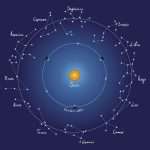 Side note: "The hebdomad is the only number within the decad {apart from the monad} which neither generates nor is generated by another number within the decad; hence it is called by Pythagoreans ''virgin, not born of mother''.....Moreover, the hebdomad consisting of the dimensions and the four limits makes manifest corporeality and organic life. The limits are point, line, plane, solid; the dimensions are length, breadth, depth." [Page 186 'Alexandria' Vol 3. / D. Fideler].
Side note: "The hebdomad is the only number within the decad {apart from the monad} which neither generates nor is generated by another number within the decad; hence it is called by Pythagoreans ''virgin, not born of mother''.....Moreover, the hebdomad consisting of the dimensions and the four limits makes manifest corporeality and organic life. The limits are point, line, plane, solid; the dimensions are length, breadth, depth." [Page 186 'Alexandria' Vol 3. / D. Fideler].
'The Secret Life of Plants' by P. Tompkins and C. Bird.
"We cannot choose our garden, merely the way in which we work with it."
Question. A 'garden' within a 'temple' ?

Labyrinth = ''Double axe''?
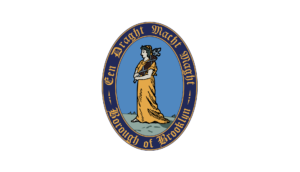
Over the shoulder?
Analogy?..."The potential literature for an intellectual study of this is vast. We hope we have provided a few simple pointers on the way. It is however, a 'centering' in, rather than a wandering in the labyrinthine fields of intellectual speculation, that is the direct way of truth. The 'rose' blooms at the center of the cross. And those who are prepared to contemplate the imagery and take it unto their inmost hearts are the more likely to be met by Beatrice from the triumphal car {'chariot'}, and 'led' to places where even the intellectual genius of a Virgil cannot go." [From the book by G. Knight].
N.B. ''Intellectual speculation'' = Saa {Egyptian equivalent}.
And/or: ''The name given to the point on a graph where the two axes meet is Origin.'' ['The Chase'].

Red thread?
Fasces (/ˈfæsiːz/ FASS-eez, Latin: [ˈfaskeːs]; a plurale tantum, from the Latin word fascis, meaning 'bundle'; Italian: fascio littorio) is a bound bundle of wooden rods, often but not always including an axe (occasionally two axes) with its blade emerging.
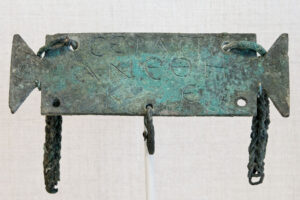
Votive tablet_Serapis
The fasces is an Italian symbol that had its origin in the Etruscan civilization and was passed on to ancient Rome, where it symbolized a Roman king's power to punish his subjects,[1] and later, a magistrate's power and jurisdiction. The axe has its own separate and older origin. Initially associated with the labrys (Ancient Greek: λάβρυς, romanized: lábrys; Latin: bipennis),[a] the double-bitted axe originally from Crete, is one of the oldest symbols of Greek civilization.
The image of fasces has survived in the modern world as a representation of magisterial power, law, and governance.
What were the fasces? Essentially a dozen or so rods of birch bound together with an axe by leather straps. B. has little archaeological evidence to go on. The 7th century Tomb of Lictors found at Vetulonia (in Etruria) shows that the Roman Kings had fasces, carried by 12 lictors (perhaps representing the twelve Etruscan cities). Dressed in red tunics with a distinctive white stripe, and with their rods and axes highly visible, they were ready to administer corporal or capital punishment (and even both together): the rods would be unbound and the straps then used to bind the legs and arms of their victims. Numerous accounts testify to the awe or tacito terrore in which they were held.
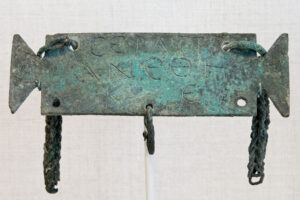
"The Torah states that Moses died at the age of 120, a ripe old age at which to die. Nevertheless, his death is usually considered tragically premature, as it came before completing his life mission to reach the Promised Land." Spirit and soul. Which and why?
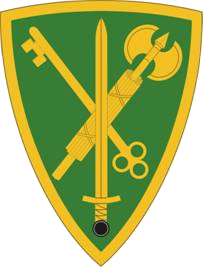
Worn on the shoulder.
Under the republic the lictors transferred to the consuls but their authority was somewhat tempered as democracy advanced: axes were lowered within the city boundary, the lictors rotated monthly between the two consuls, and a right of appeal was instigated against summary punishment. But the lictors were far from ornamental: they cleared the way for their magistrates and upheld order in the Senate and courts. Often under the republic they were in the firing line between magistrates and the plebs, and could be attacked on occasion by the mob. Outside Italy they wielded Rome’s authority, accompanying imperial praetors and governors, though were often sensitive to local feeling: Cicero advised his departing governor brother ‘let rods and axes bear before you insignia of rank rather power’.
For the magistracy the fasces were a badge of pride, the knighthoods of today, and after death were displayed on family tombs. For military triumphs they were garlanded with laurels. And the trappings of office multiplied: praetors, ex-consuls, important priests, city councillors, all became entitled to lictors; even Vestal Virgins were escorted by one. Sulla had twentyfour when dictator, praetors serving abroad had 12 each. Plutarch claims that Caesar wintering at Luca, where he met Pompey and Crassus in 56 BC, was visited by 200 senators and magistrates attended by 120 lictors.
Who were these lictors? Generally they were freedmen, exempted from military service, and they were ranked in any entourage below accensi (personal assistants) and scribes but above messengers, copyists, soothsayers and heralds.

Hoe money. Aztec.

Common factors?
Side note: Many speculate about the axe shape 'head' forms on the stones at Stonehenge. Most on the rough external side of those Sarsen stones - but some on the smooth inner side {hewn/Unhewn}. That inner side having purposely been 'dressed'. Adepts {of subject material} on the inner . Initiates on the outer {Greater/Lessor Mysteries}. Landscape equivalent. 'Blue' stones from the 'mountain' . Sarsen from the 'valley'. Large ancient bulls {auroch's} skulls found in nearby pits - either side of the main ''gateway'' that address's the spiritual element {REPRESENTED} with the sun at the solstices. Skeletons found nearby - some minus the 'head' and 'jaw'. Enlarged throughout. ['Blowing Up History: Ghosts of Stonehenge' / Sat/TV].

S/W corner? And/or Abydos in relation to Dendera as a means....?
Question. What would REPRESENT 'soul'.
'Wood' henge?
Middle ground {i.e., connection between the 'two'} = semi-circle. Both within the henge itself and the nearby river. 'Fire' and Water.
REFRESHER: Avon in Welsh means 'river'.
Try 90/180 degrees. One relates to this world - the other - the next i.e., 'ninety' in relation to the 4 corner points. And/or Precession. That same representation within the Giant Dance circle of stones { i.e., '90' } - that predates Stonehenge - its origin - cut from the northern side of the Preseli Hills {''Place of Residence''- therefore ''house'' link?} - at Waun Mawn {'peat moor'}. That same ''marshland'' that those ''bog bodies'' are found in throughout Europe from a S/E - N/W direction throughout those countless generations. Dolmens found mainly on the Western side of these islands. Heading towards the N/W. Many found emphasising THREE points of contact between 'heavy' vertical and horizontal stones. West in relation to the horizon - the middle {balance} between above/below.
'Metal of the Mind' {Trident}? Who/What REPRESENTS IT?

Many stone temples built in the form of a forest of trees.
Side note: ''Peat is essentially pickled vegetation that's been building up for thousands of years under our feet. It was once a lake or pond but because of that build up now is a huge carbon store that has to be protected from being lost into the atmosphere. Peat is a bit of a miracle substance. Normally rotting vegetation releases carbon dioxide but peat land stores it. Locks it in the earth and stops it being released, heating the planet. Our peatlands, bogs, marshland, fens and swamps cover about 3% of the earths land surface BUT they store more than twice the amount of carbon that is held IN ALL THE WORLDS FORESTS - isn't that incredible?'' ['The Lakes with Simon Reeves' / BBC2 / S1 EP3].

5:4 to enlarge.
Continued: "Cassiopeia is one of the oldest and popularly best known of our constellations, and her throne; ''the shinie Casseiopeia's chair'' of Spencer Faerie Queen, is a familiar object to the most youthful observer. It is also known as the Celestial 'W' when below the pole, and the Celestial 'M' when above it {Waun Mawn?}...Hyginus describes the figure as the Queen ''bound to her seat'' and thus secured when going around the pole - head downward- as a lesson selected by her 'enemies' {i.e., negative aspects?}, the sea-nymphs - as a lesson in humility...Known by the Greeks as 'She of the Throne' but at one time in Greece it was the Laconian Key: 'A brazen key she held, the handle turned, with steel and polished elephant adorned' {Homer}.
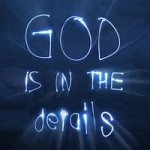 Big Dipper? {'handle' of}. Hands in relation to feet.
Big Dipper? {'handle' of}. Hands in relation to feet.

'Spirit' or 'Soul'?
"The Roman numeral system uses only seven symbols: I, V, X, L, C, D, and M. I represents the number 1, V represents 5, X is 10, L is 50, C is 100, D is 500, and M is 1,000. Different arrangements of these seven symbols represent different numbers."
Side note: Try Aberfoyle to see it from a different perspective. The Scottish one.
And/or: ''His eyes are set further back in their sockets, they burn with unsatisfied hunger like bears glaring out of the back of caves....'' [Page 363 'Mercurius'].
Analogy: Sokar ''at the back'' of someones head.

Triangular? Fire or water?

Asleep - ready to awaken?
Side note: ''The Gospel of Ramakrishna is the English translation of the Sri Ramakrishna and his disciples, devotees, and visitors, recorded by Mahendraneth Gupta, who wrote the book under the pseudonym of ''M''....To Western readers....this wealth of detail can be a trifle disconcerting...because it is entirely Indian. But after the first few surprises and bewilderments, we begin to feel something peculiarly stimulating and instructive about the very strangeness and, to our eyes, the eccentricity of the man revealed to us in ''M's'' narrative. What a scholastic philosopher would call the ''accidents'' of Ramakrishna's life though intensely Hindu and therefore, as we in the West are concerned, unfamilar and hard to understand; its 'essence', however, was intensely mystical and therefore UNIVERSAL.....about the nature of Ultimate Reality.....about life of the spirit.'' [Forward to the book of same by Aldous Huxley].
Cassiopeia to enlarge.
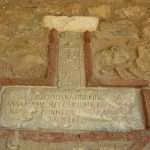
Plaque Relief from the Museum of Mystras. Djedefre pyramid link? Upside down? One a beginning - the other - An end? Twice as wide?
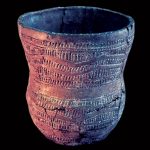
Twice as high as wide?
Continued: And/or: Laconia or Lakonia (Greek: Λακωνία, Lakonía, [lakoˈni.a]) is a historical and administrative region of Greece located on the southeastern part of the Peloponnese peninsula.....Diro is most famous for its caves, the Diros Caves, located approximately 12 miles south of Pollapolis. They form part of a river. About 5,000 meters of polla have been exposed and are accessible by small boats and through narrow passageways. One is surrounded by formations of stalagmites and stalactites. Archaeological research has shown that the caves served as places of worship in Paleolithic and Neolithic times and their inhabitant believed that the caves were the entrance to the underworld. [Wiki].
Side step: What are these islands made of. Foundation of sea shells. Ancient Seas - built up over time {soul?}. Volcanic activity beneath {fire?} - as a NATURAL means....?
North-West Europe. What the Greeks defined as the Hyborean Islands.

Epiphany? 64 parts?
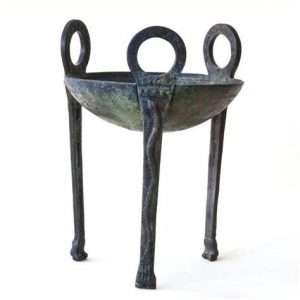
Wine as an epiphany?
Something hinted at: ''Now the Best's can, with the very best quantum catch-it equipment, tune in around the world to what is best and tastiest food being cooked that day. Is it the corn and crab soup served in Hong Kong at the Peninsula Hotel? Is it the barbecued ribs at the Rendezvous in Memphis?....Somebody with a 'cold' is given chicken soup, served in a big glass bowl. But in the chicken 'soup' at different levels float various delectable wonders......layers of floating little worlds {'23'?}, until finally when you get to the bottom {Jordan Valley?}, the soups ground of being, you reach the Ursprung, a wild mushroom with a slight magic to it. Thus one eats one's way from the most ephemeral reality to the deepest and, on arriving, finds it to be an epiphany.'' [Page 289 within the Chapter 'The Feast of Maturity' from the book 'A Mythic Life' / J. Houston].
'Cancer/Queendom' to enlarge.
A work in progress: The 'wet' conditions spoken about in the tomb of Tutankhamun. Words like mould {mold}, fungi and bacteria used to describe the consequences of such conditions - as a result of a ''rush job''.
Question. Did those artisans of that spiritual culture EVER rush anything - with someones ''eternal life'' in mind?
''Lightening'' to enlarge.
Side note: 'Thirteen' layers of linen?
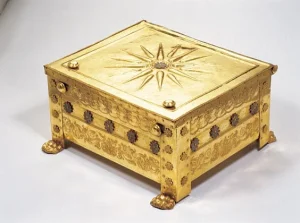
The tomb of Phillip II was found in the modern Greek village of Vergina, the site of Aigai. Objects from the tomb included an ivory head {bedpost}; a gold wreath with myrtle leaves and flowers; a gold quiver cover; a gold larnax, or ossuary, decorated with a sunburst {'SIXTEEN' pointed} or star likely containing Phillips remains; and a gold ornament of the gorgon Medusa.
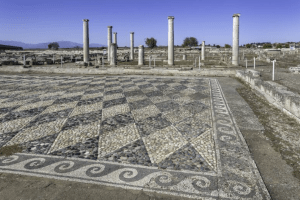 And/or: "Most impressive of the three tombs is Tomb II, which is usually identified as the tomb of Philip II of Macedon. It has a vaulted roof and is divided by large doors into a main room and an antechamber. The “façade gives the impression of a small Doric building,” and is decorated with an imposing, painted, hunting scene (Borza: 258). The tomb is thought to have been covered with soil while the paint was still WET and the painting is therefore not well preserved; however, outlines of most figures are still visible and detail of a few are evident. The painting portrays a royal hunt and is clearly very impressionistic as it shows more than one animal being hunted and the hunt is simultaneously at many different stages: stalking, confronting, and killing (Borza: 259). The painting shows clear similarities to the painting (now lost) that inspired the Alexander mosaic; it is possible that this hunting scene is one of the painter’s earlier works (Biers: 320).
And/or: "Most impressive of the three tombs is Tomb II, which is usually identified as the tomb of Philip II of Macedon. It has a vaulted roof and is divided by large doors into a main room and an antechamber. The “façade gives the impression of a small Doric building,” and is decorated with an imposing, painted, hunting scene (Borza: 258). The tomb is thought to have been covered with soil while the paint was still WET and the painting is therefore not well preserved; however, outlines of most figures are still visible and detail of a few are evident. The painting portrays a royal hunt and is clearly very impressionistic as it shows more than one animal being hunted and the hunt is simultaneously at many different stages: stalking, confronting, and killing (Borza: 259). The painting shows clear similarities to the painting (now lost) that inspired the Alexander mosaic; it is possible that this hunting scene is one of the painter’s earlier works (Biers: 320).

Inside or outside as a means....?
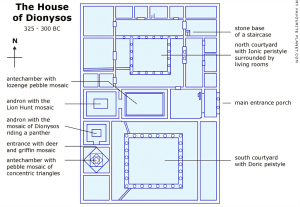 Different take on the same theme: "As the rose among the 'thorns', so is my love among the 'maidens'." {Song of Songs 2:2} IN RELATION TO: "The 'rose' reveals a little 'bit' of that thing which is the mystery of what one calls truth. It is sometimes not elaborate {abstract?}. It sometimes does not seem especially spiritual {'pagan'?}. It sometimes does not appear to be especially innovative {basic?}. Yet it has its own beauty {enlightenment?}. The Thirteen Petaled Rose is offered to readers so that they can try to encounter something which is true, in itself. For that purpose, the meeting between book and reader may be of use...The books advantage is that it is not an outsiders point of view; rather, it is a glimpse of the inside...It is hidden not just by language, but by a very different style, by a myriad of almost incomprehensible formulas {keys?}." [Preface - by author - : 'The Thirteen Petaled Rose' / A. Steinsaltz. All emphasis etc., this readers]. 'See' it?
Different take on the same theme: "As the rose among the 'thorns', so is my love among the 'maidens'." {Song of Songs 2:2} IN RELATION TO: "The 'rose' reveals a little 'bit' of that thing which is the mystery of what one calls truth. It is sometimes not elaborate {abstract?}. It sometimes does not seem especially spiritual {'pagan'?}. It sometimes does not appear to be especially innovative {basic?}. Yet it has its own beauty {enlightenment?}. The Thirteen Petaled Rose is offered to readers so that they can try to encounter something which is true, in itself. For that purpose, the meeting between book and reader may be of use...The books advantage is that it is not an outsiders point of view; rather, it is a glimpse of the inside...It is hidden not just by language, but by a very different style, by a myriad of almost incomprehensible formulas {keys?}." [Preface - by author - : 'The Thirteen Petaled Rose' / A. Steinsaltz. All emphasis etc., this readers]. 'See' it?
11th hour?
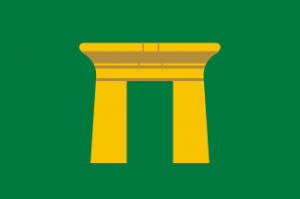
New city?
Recall Part 1 in relation to Song of Songs.
"Myriad: (chiefly in classical history) a unit of ten thousand."
'10000'.
Refresher: "...the 'nails' of objectivity - which give conscience to thought." The symbol of which is the Crown of Thorns, i.e.,"The 'thorns' of the crown center function as the 'nails' of objectivity..."
Hence the link to the first paragraph of the first chapter: "The physical world in which we live, the objectively observed universe around us, is only a part of an inconceivably vast 'system of worlds'. Most of these worlds are spiritual in their essence, they are of a different order from our known world. Which does not necessary mean that they exist somewhere else, but means rather that they exist in different 'dimensions' of being..." Same book.
Personal example: Try ''becoming'' in relation to {synchronistic?} workings {and comments/observations} of Wolfgang Pauli. ALL in relation to that ''bit''.
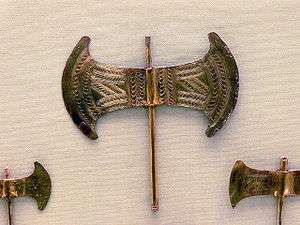 A side step: i.e.,a link to that co-existence, {'meeting'?} i.e., continue the ‘curvature’ at the ends of 'each' axe to complete a ‘shape’. Representative of...’Visible’ bit, = physical, [i.e.,east-west]. ’Invisible’ bit = [ B-C ]...See it? [See also www.recoveredscience.com for a detailed analysis on the above. That link to the 'Southern Cross' constellation in relation to 'representing' the beginning of that 'second leg' by way of 'Goose' symbolism. As used by the North American Indians, i.e., as an example...the 'foot of the goose' a link to 'scratch' symbolism, ['Cygnus Mystery'. Mentioned elsewhere].
A side step: i.e.,a link to that co-existence, {'meeting'?} i.e., continue the ‘curvature’ at the ends of 'each' axe to complete a ‘shape’. Representative of...’Visible’ bit, = physical, [i.e.,east-west]. ’Invisible’ bit = [ B-C ]...See it? [See also www.recoveredscience.com for a detailed analysis on the above. That link to the 'Southern Cross' constellation in relation to 'representing' the beginning of that 'second leg' by way of 'Goose' symbolism. As used by the North American Indians, i.e., as an example...the 'foot of the goose' a link to 'scratch' symbolism, ['Cygnus Mystery'. Mentioned elsewhere].
"Got to see it, rather than just read it..." John Humphrys talking to D. Tennant and Greg Doran in relation to the plays by W. Shakespeare. [400th anniversary. Radio 4. 23/04/16].

Four 'corners'?
"Of all the ancient civilizations in North America, human hands have built no greater earthwork than the Monks Mound {Cahokia} near the confluence of the Mississippi river...[www.world-pyramids.com]. Made of different coloured soils; not common to local area. On top a {sacrificial?} temple of unknown purpose. Try ''Silbury hill''.
Analogy with same intent..."The site's final decommissioning involved the remaining sanctuaries, cult buildings, shrines, and other structures being buried beneath thousands of tons of imported earth, quarry chippings, and refuse matter." [From the book 'Gobekli - tepe'. Mentioned elsewhere].
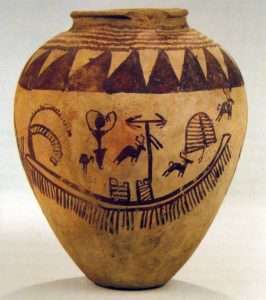
Anchors away?
Refresher: "Many years ago the English psychologist, F. W. H. Meyes, suggested that - ''hidden in the depth of our being is a rubbish heap as well as a treasure house''.
"I will give you the treasures of darkness and the secret places." {Isaiah 45,7}.
Sumerian equivalent: "...the birthplace and abode of the Anunnaki was the Duku, a Sumerian word meaning 'holy mound'...Just a riffle through the dirt and soil of any occupational mound very quickly produces potsherds, worked flints, and even human remains, which might easily have been seen as material evidence of the former presence on earth of the gods. The existence of these 'tells' is most likely the root behind not only the Duku mound of Sumerian mythology but also the primordial mounds featured in the myths and legends of other ancient civilisations..." [Same book].
Question. Can you 'see' what the author cannot?
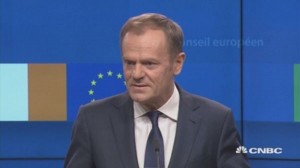
''A special place in hell''. Question. For the Germans or Euro?
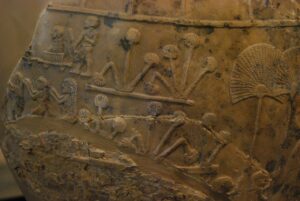
Scorpion king mace-head.
Side note {i.e.,as seen from a different perspective}: "In Scorpio the individual is forced to touch bottom. He must be willing to surrender his individual uniqueness and individual prerogatives. As he does so, he descends in consciousness into the common root {'anchor'?} of the group. He learns to live in terms of humanity as a whole. In a sense this is symbolised by Christ's descent into 'hell'. Through such a descent the human depths are 'redeemed' - that is, they are made significant. They are given an individualised meaning and a conscious value by this descent of the individual...He is like a tree with a powerful tap-root, able to draw sustenance from the hidden springs of life...which are the foundation of human behaviour." ['The zodiac as the Universal Matrix' from the chapter for 'Scorpio'].
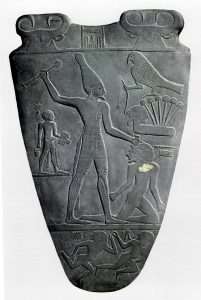 And/or: Understand subject material to give a possible location for all that material that was taken out of the now ''dry moat'' that surrounded the Step Pyramid.
And/or: Understand subject material to give a possible location for all that material that was taken out of the now ''dry moat'' that surrounded the Step Pyramid.
As is..."It had long been thought that the two great stone circles of Stenness and Brodgar were the focus of ceremonial life in Orkney; but a chance discovery has revealed they were part of something much bigger. There's a low hill {in the background} between the two circles. Everyone thought it was something left behind by the glaciers - in fact it is almost entirely man made..." [ Quote by the narrator N. Oliver from the documentary 'Sacred Wonders of Britain'. Episode 1].
Question. Any planets and/or constellations to mark a 'foundation'?

Birds 'foot' for a 'navel'? lion cloth? Under ''ones belt''? Try ''Running the fields'' or ''Sed Jubilee'' to enlarge. And/or: The alternative name - for the Lynx constellation {now in disuse} was the Tiger - and with others it was the Little Fox with the Goose." [Page 280]. All as a means...? 'Spots and stripes'?
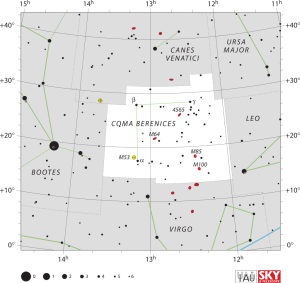
'Triangle' or 'Right angle'?
"The Agnisuryans respond to the sound. The waters ebb and flow. Let the 'magician' guard himself from drowning, at the point where land and water meet. The midway spot, which is neither dry nor wet, must provide the standing place whereon his feet are set. When water, land and air meet there is the place for 'magic' to be wrought." i.e., look to the 'apex' of that triangle for further clues as to that 'Islands' true purpose. As with the 'apex' of the Nile Delta or for an analogy of same... the confluence of rivers as with the Mississippi one.
Side note: Circular stones recently found at the apex on Oak island - what they refer to as ''the eye of the swamp''. A dome shape on top. Question. Twelve stones? ['Curse of Oak Island'].
And/or: A wooden structure of some description has been located beneath that 'triangular' MARSH land - looks like a ship. A treasure ship? or symbolic of something 'upside down'? {edited 30/1/2020}.
Continued: Question. Understand subject material to give a possible location for all that material that was taken out of the now ''dry moat'' that surrounded the Step Pyramid.
Same question to the speculated 'trench' that has been recently discovered around the boundary walls of ancient Alexander. ['Lost Tomb of Alexander' / Nat. Geo. March 2019].
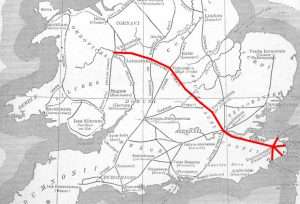 The English name holloway, or hollow-way, derives from the Old English "hola weg", a sunken road. The paths have evolved over hundreds of years, sometimes beginning as trenches or boundaries between fields or estates.
The English name holloway, or hollow-way, derives from the Old English "hola weg", a sunken road. The paths have evolved over hundreds of years, sometimes beginning as trenches or boundaries between fields or estates.
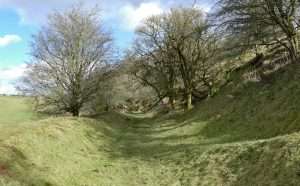
Offas Dyke.
A working example: "The Mysteries cannot die, be diminished or be way while there are people keeping the sacred path open. The Western Way has been walked by the ancestors, as well as by those now living, it will be trodden by children yet to come - whose ancestors WE will be. Our task is to keep the pathway clear by walking it with honour and enable the mystical rose to bloom upon the tree of tradition." {Intro: 'The Western Way: A Practical Guide to the Western Mystery Tradition' / C + J. Matthews}.

5 {Hydra} = cursus link?
And/or: ''Approximately 5500 years ago CAUSEWAY camps like Crickley Hill and Robin Hood's Ball were abandoned {decommissioned?}, their decline heralded the end of hostile activities in Britain, and in the relative peace that followed, monumental construction in and around Stonehenge began once more - with the digging of huge oval ditches {'ecliptic' and/or 'Precession' link?}. The largest of which is the Greater Cursus...Interpreting the Cursus has been very difficult....Over two and half kilometres long - required a huge area to be cleared - before 20,000 tons of chalk was excavated to form its immense ditch....Flint axes used in huge quantities.
Question. Where was the material put? And to what use?
Above/below the 'Horizon' ?
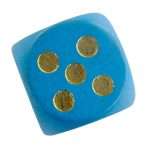 Side note: ''Hostile'' and ''peace'' in relation to a 'Watershed' relative too: "What will be of special interest to us here is the way in which the Jewish legend of Seth was incorporated into Christian literature.
Side note: ''Hostile'' and ''peace'' in relation to a 'Watershed' relative too: "What will be of special interest to us here is the way in which the Jewish legend of Seth was incorporated into Christian literature.

'five'.
This process will be traced by examining the section of The Gospel of Nicodemus which includes the Seth legend, the Descensus Christi ad Inferos; by establishing the relationship between Seth’s journey to the Earthly Paradise and Christ’s descent into the lower world; and finally by considering the interpolation of part of The Gospel of Nicodemus into the Vita Adae et Evae....The central event of the Descensus is Christ’s descent into Hell to free the Old Testament patriarchs. The descent into the lower world, even more than the journey to Paradise, is a theme which has figured largely in the literatures of many peoples, for example, the Babylonians, Egyptians, and Greeks.’*? Among the Jews there existed a belief in the rescue of the patriarchs from Sheol, and in the Old Testament as well as in apocalyptic writings, God appears as a conqueror of the lower world.” In the New Testament we read in Ephesians 4:9 that “he [Christ] descended .. . into the lower part of the earth.” This passage, together with other similar New Testament passages, formed the basis of the belief that Christ had in truth descended into Hell.
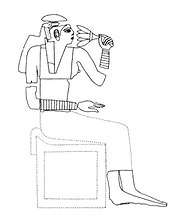
Ancestor.
As Hulme points out, the verses from the New Testament became the texts for numerous homilies by the early Church Fathers, and they were thus developed and enlarged upon, until we have the Descensus in outline in the sermons of Clement of Alexandria and others....
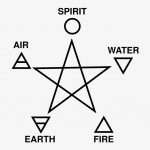
'Spirit' = 'Head'? Question. Hearing/Smelling - which and why?
The period of 5,500 years, which was to elapse between the death of Adam and the death of Christ, was established during the early centuries as the interval between the Creation and Incarnation. The figure was based on the belief that as the Creation was completed in six days, and as “one day with the Lord is as a thousand years,”?! the consummation of all things was to be achieved in 6,000 years. The Incarnation was to have taken place in the middle of the last millennium, that is, 5,500 years after Adam’s death.” The round figure 5,500 was used by the author of the Descensus, not for the birth of Christ, but for his descent into Hell.....
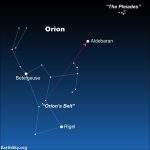
Pleiades: the Harrow Cloudy Train of Female Stan of Manilius, and the Starry Seven, Old Atlas' Children, of Keats' Endymion, have everywhere been
As Christ himself said, “Unless a man be born again of water and the Holy Ghost, he cannot enter into the kingdom of God” (John 3:5). It was thus in the sacrament of baptism that the author found for Adam his entrance into eternal life.** Christ’s redemption of man from original sin by baptism was, of course, orthodox Christian doctrine. The actual relationship, moreover, between the two beliefs—Christ’s ministry in Hell and the efficacy of baptism— was not new in the Descensus.

'Silk' ?
The two beliefs were, as J. H. Bernard points out, associated in the New Testament, an association which recurred in many early Christian writers.” The beliefs were, according to Bernard, viewed as antitypal in the early church, that is, the Descent was the type or pattern of which baptism was the antitype.*® Bernard has further sought to show that the ultimate relationship between the two ideas stems from the belief that both baptism and Christ’s mission in Hell involved the descent into the water of the primeval abyss.” " [Page 40 'The Quest of Seth for The Oil of Life' / Esther Quinn].
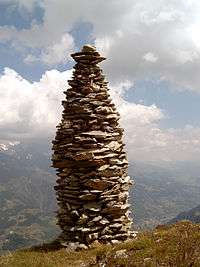
'Horn'?
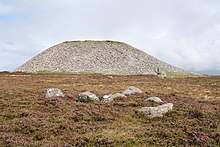
Overlook/Overhang as a means....?
And/or: "Somewhere into this picture fits the idea of cremating the dead. It was a universal practice in Britain....to burn the dead on a pyre....enclosed in a circular trench and often in a ring of wooden posts....I have only helped to direct the excavation of some 16 barrows or cairns. All of these except three, were surrounded by a circular trench and two had an inner ring of post holes." [Page 117 'Gog Magog'].
The first two examples in the Macro sense of the 'word'. The third in the Micro?
Try ''logos''.
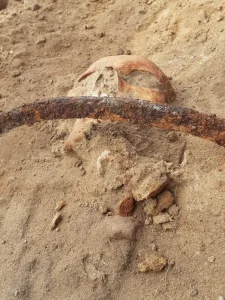
Zosia. Sickle over throat. Triangular padlock on her toe.
And/or: At Huntingdon {near Ermine Street and the town of Godmanchester}- a sacred area enclosed on three sides by a trench of three straight sides - {with no post holes?} that was occupied during the late Roman Period {Dark Ages}. Finds include smashed pots placed purposely in shallow ground {'stacked'?}. The 'handle' of a decorated fired vase {flagon} purposely broken off before being buried {"missing its head"}. Brooch found with pin. Paintwork "smudged," artwork unfinished {Tutankhamun link?}. Other items found: hand sickle / scythe {with handle}- snake rings + a 'little' ring with spirals at each end. Very similar to the one found in the 'Valley of the Monkeys' {West branch of Valley of Kings}: "An industry could have been present selling 'small' miniature reproductions of the real thing as votive offerings." ['Digging For Britain'].
"We are thinking at the edge, where the shoreline of sense meets the wild ocean of mystery." [From the book by T. Freke and P. Gandy].
'Perth' to enlarge.
Analogy?: The highest hill on the eastern ridge is where the Dome of the Rock is located.

Qena ='New City'.
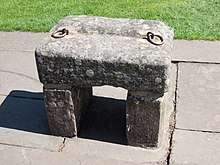
Stone of Scone. A new something? A beginning? Try Meritaten to take a mind set a ''step'' further.
The Wars of the Jews, Book 5 chp 4, 2. It was Agrippa who encompassed the parts added to the old city with this wall, which had been all naked before; for as the city grew more populous, it gradually crept beyond its old limits, and those parts of it that stood northward of the temple, and joined that hill to the city, made it considerably larger, and occasioned that hill, which is in number the fourth, and is called "Bezetha," to be inhabited also. It lies over against (across from) the tower Antonia, but is divided from it by a deep valley, which was dug on purpose (a moat), and that in order to hinder the foundations of the tower of Antonia from joining to this hill . Most people place Fort Antonia on the hill Bezetha. As we can see this is incorrect according to Josephus. It (Bezetha-New City) lies over against (across from) the tower Antonia, but is divided from it by a deep valley, which was dug on purpose (the moat)."
And/or: ''Fort'' in relation to 'iron' and giant and his daughter {i.e., Ysbaddaden and Olwen} - in relation to 'comb' / 'shears' and 'razor'. [Pages 60/63/72 'Fruits of the Moon Tree].
Glastonbury?
Side step: Try ''Ophel Hill'' {more importantly a 'ridge'}. The Hebrews most sacred site.

As one example find the connection between THIS symbol and THAT one. Before those 1st impressions decide something else.
"It would be excellent thing to dissect and analyze the swastika material we have found; to generalize and deduce from it a possible theory as to the origin, spread, and meaning of the swastika and its related forms, and endeavor, by examination of its associated works, to discover if these were religious symbols or charms or mere decorations; and, following this, determine if possible whether the spread of these objects, whatever their meaning, was the result of migration, contact or communication. Were they the result of similar, but independent, operations of the human mind, or were they but duplicate inventions, the parallelism in human thought? This investigation must necessarily be theoretical and speculative. The most that the author proposes is to suggest probabilities and point the way for further investigation." ['Swastika the Earliest Known Symbol and its Migration' / T. Wilson].
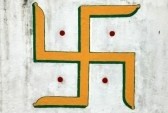 That same ‘shape’ {but now in 'tree' form} that the Hebrews use to define a ‘completion’. [Alpha/omega..etc.] Symbolic of that total journey, i.e., A+B+C. All within one landscape. The Neolithic/paleolithic equivalent. The swastika. The origin of the cross. That first effort of attempting to represent that whole journey in the form of a cross within that same ‘shape’, i.e., the true shape of those straight ’legs’ were originally in ‘curvature’ form. Join each curve to the back of its adjacent one. Similar to the double axe.
That same ‘shape’ {but now in 'tree' form} that the Hebrews use to define a ‘completion’. [Alpha/omega..etc.] Symbolic of that total journey, i.e., A+B+C. All within one landscape. The Neolithic/paleolithic equivalent. The swastika. The origin of the cross. That first effort of attempting to represent that whole journey in the form of a cross within that same ‘shape’, i.e., the true shape of those straight ’legs’ were originally in ‘curvature’ form. Join each curve to the back of its adjacent one. Similar to the double axe.
Finally Cronos, [ lower self/large bit. i.e., Father of 'lower'...shown wrapped, [ externally ] in the coils of the snake. Representing/symbolic of that still in the unconscious/ 'unknown' state. That awareness has to be an inner one. As is the case with the Mayan/Aztec serpent externally ascending/descending those ‘temples’ that resemble those ‘mountain’ monuments of amongst others at Giza and Gobekli-tepe. External relative to 'inner'.

others - elsewhere.
".......in Wolfram, the Philosophers stone is the supreme symbol of earthly perfection. As Jung has shown in his 'Psychology and Alchemy,' the Philosophical Stone is the alchemical symbol par excellence of the inner Self, the foundation stone and quiet center in the midst of the soul. As such it has many analogies, ranging from the diamond body of Buddhism to the Islamic 'Kaaba of the Heart.' Also related is the Oriental and Gnostic symbolism of the 'pearl of great price' surrounded by a 'dragon' which refers to the same psychic structure, while metaphysically it refers to the timeless center surrounded by the coils of time and manifestation." [Chapter on Parzival. Mentioned elsewhere. Within the book, 'Alexandria.' Vol 1 by D. Fideler].
 ''The so called St. Andrews Cross, which can be seen on numerous Olmec statues, appears again in the Hopi sand altar - in the Antelope kiva Snake Ceremony. Apparently it has been derived from the diamond pattern on the backs of rattlesnakes.'' [Page 278 'The Orion Zone'].
''The so called St. Andrews Cross, which can be seen on numerous Olmec statues, appears again in the Hopi sand altar - in the Antelope kiva Snake Ceremony. Apparently it has been derived from the diamond pattern on the backs of rattlesnakes.'' [Page 278 'The Orion Zone'].
Another example.."When you read the Quran don't look only at the exterior, my son: the devil considers Adam as nothing more than clay. The external sense of the Quran is like a persons form: while his features are visible, his spirit is hidden. Someones uncles look at him for a hundred years, and yet of his inward state don't see so much as the tip of a hair".[ Mathnawi 111, 4247- 4249. Extract taken from the book 'The Light of Dawn' by C. Helminshi]].
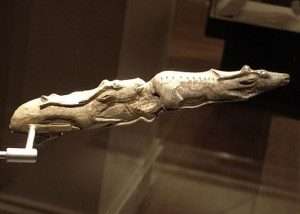
Another 'piece' within that mind set? 'The Swimming deer'. The 'tip' of a mammoth horn - in two pieces. Enlarged throughout.
Egyptian equivalent, mummification...from the verb 'anp'..."to wrap around", but now in that possible 'inner' sense. Indicative of the 'sacred' embalming tools and materials used, i.e., sacred amulets etc. Indicative of an 'understanding'...that inner one, but now from a ''known'' point of view. [symbolic of]. Hence the link to that same verb to 'Anubis', ['he who is on his hill' i.e., higher over lower, but note...still in 'its' lower state, within the overall journey. ]...the sacred 'embalmer'...who leads each individual into the next stage of their individual journey, i.e., an ongoing 'development'... from that 'lower' [unknown/'unconscious'/] start point, i.e.,''shadow'' aspect, of which all animals in whatever form represent. [Chapter eight. 'The Sirius Mystery'.
Recall what the 'form' of a 'pennant' is a representation of.
Or Chapter five, [page 227] 'The Sphinx Mystery' by the same author, showing two pictures of the dog 'god' Anubis 'enclosing' all its lower aspects, [from the tip of its nose to the tip of the tail] indicative of a potential, through an awareness, left to right then right to left, i.e.,something learned in the 'horizontal' to be applied in the 'vertical'. Represented in [A] on North and South doorjambs, respectively, i.e.,N/E--S/W.......S/E--N/W. Another clue. Person standing [sometimes shown in 'movement', i.e.,walking] on the far left, on the Northern doorjamb in relation to the same individual seated on the far right, on the Southern doorjamb. North in relation to South. The beginning and return of something. Symbolic of.
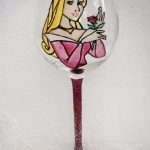 A working example: ''Ankhesenamun has renewed Tutankhamun, has transformed him and vitalized him with all her 'powers' on the back and sides of the shrine. So, too, the Memphite-Heliopolitan deities have been provided with ample nourishment. And now the queen directs the dynamism of her praise towards the exalted king....on these HORIZON doors. Above them soars the winged solar disc, Horus of Behdet, connecting the royal couple with both sky and sun. And flanking them on either side are the names inscribed on the door jambs. Those on the left = pharaohs sonship with the Memphite deities Ptah and Sekhmet. Those on the right = Heliopolis image of the sun god. Both proclamations end with the words that the king is the beloved of the 'Great of Magic'....radiating all the great enchantress's magical rage and radiance...The king firmly grasps a lapwing by its wings. This is the ubiquitous rekhyt bird, frequently seen in Egyptian art as a symbol of the kings subjects.'' [Page 44 'Egypt's Anointing Mysteries' / A. Roberts].
A working example: ''Ankhesenamun has renewed Tutankhamun, has transformed him and vitalized him with all her 'powers' on the back and sides of the shrine. So, too, the Memphite-Heliopolitan deities have been provided with ample nourishment. And now the queen directs the dynamism of her praise towards the exalted king....on these HORIZON doors. Above them soars the winged solar disc, Horus of Behdet, connecting the royal couple with both sky and sun. And flanking them on either side are the names inscribed on the door jambs. Those on the left = pharaohs sonship with the Memphite deities Ptah and Sekhmet. Those on the right = Heliopolis image of the sun god. Both proclamations end with the words that the king is the beloved of the 'Great of Magic'....radiating all the great enchantress's magical rage and radiance...The king firmly grasps a lapwing by its wings. This is the ubiquitous rekhyt bird, frequently seen in Egyptian art as a symbol of the kings subjects.'' [Page 44 'Egypt's Anointing Mysteries' / A. Roberts].
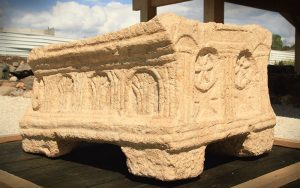
Found in the birth town of Mary Magdalene. Refresher: ''Error runds down a plane - while truth climbs laboriously up hill."

“Most certainly, I tell you, one who doesn’t enter by the door {'gate'} into the sheep fold, but climbs up some other way, is a thief and a robber." AND/OR: A multitude lie sick in a certain place, called a “gate for sheep,” and this has five porches. In these five porches lie a multitude of “them that were sick, blind, halt, and withered.” We know already that in the language of parables the sick, the halt, the paralysed and so on, represent psychological states. Now in the miracles given in John’s Gospel, the number five occurs again in connection with the Woman of Samaria, who had five husbands, and to whom Christ spoke at the Well. He told her she had had five husbands and that her present husband was not her real husband: and then he spoke to her of “living water’ —that is, living Truth— which, Christ said, if once a man drank of it he should not thirst. And she said: “Sir, give me this water, that I thirst not, neither come all the way hither to draw’”’. (John iv, 15.) When we receive teaching that is not of the external world at all— that is, not of the five senses, which render to us the external world, the world of the senses—it is a matter of the greatest difficulty to accept it. And even if we do accept it, we still live very close to the five senses—that is, we still remain close to all the ideas belonging to the external world as rendered by our senses which we cannot help taking for reality. The senses give us time and space, for°example, and we think in terms of time and space and cannot get beyond this sense-based thinking. Our deepest thought is beyond all time and space. But our ordinary thought is, as ft were, framed in terms of time and in terms of space and we do not know how to think in a new way, apart from these sensible categories.....
Hebrew equivalent; with same principle {i.e.,keys} in mind..."In an earlier chapter, i made reference to the Ark being positioned in the Tabernacle, so that it was illuminated by the sun at dawn, a function underlined in the translation of Bede's 'De Templo' : 'So that the equinoctial sunrise could shed its rays directly on the Ark, through the three doors, namely the portico, the Temple and the oracle'. If the temple {Herod's} was built on the same principle, then, with it being on an E/W axis, at the time of the equinox a shaft of sunlight could penetrate through the porch, and the hall, the five sided door jamb, and illuminate the Ark. In theory, as the sun moved to the North, through the summer months, to the position at the summer solstice, so the inside angle of the left hand door jamb would permit the beam of light to spread toward the south, while the northern half of the temple remained in shadow. Conversely, as the sun moved south from the equinox, toward the winter solstice, then the beam of light would become restricted by the square corner {'head of the corner' ?} of the other door jamb..."
'Rays' in relation to the 'head of the corner'.
And/or: ''The Sun and the Arc are, indeed, the most important elements of the Hercules myth, and Ishtar in the Gilgamesh deluge romance of Babylonia, plays the same false part towards Gilgamesh as Blodeuwedd plays to Llew Llaw in the Mabinogion." [Page 145 'The White Goddess'].
Hercules {'Khonsu'} / twin {'double'?} as a means....?
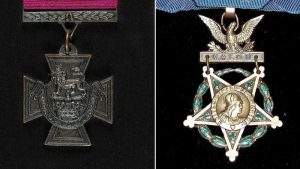
Starfish?
Continued..."For the entrance of the inner sanctuary he made doors of Olive wood with five sided jambs. {1 Kings 6:31}. Which describes the doorway between the holy of holies and the hall. For many months i pondered on this noting that in 1 Kings 6:33 there is a description of the entrance into the hall stating that the doorway was made from four sided jambs - in other words, that the doorway was very conventional. That the doorways to the holy of holies were five sided implied that they had some specific characteristic attached to them...I could not comprehend why they should decide on such an elaborate and impractical arrangement, although they obviously ..." [From the book by K. Gest. Mentioned elsewhere].
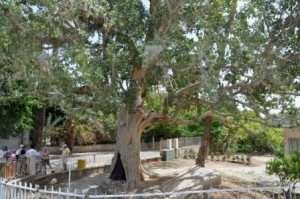

Continued: Even if we assent to the idea of eternity, where there is no time or space, we cannot grasp it. Even if we hear of a teaching that lies beyond the categories of time and space, we cannot grasp its eternal meaning because we cannot think in terms of timelessness or spacelessness. So we lie close to the five porches of the senses and although knowing another kind of teaching and even seeing its Truth yet we cannot get away from the power of the external world and its sense-given reality. Here, then, lie the multitude of those who have entered into the sheep gate, and remain close to the porches of the five senses. And they are crippled, being neither in one world nor another. So they are sick, blind, lame and withered, for they cannot psychologically move one way or the other. Yet their eyes are fastened on the miraculous waters of the pool, which at intervals is stirred into life, and they are healed one by one, according to their power of getting into the pool when the angel stirs it. The pool—that is, the waters—means as always in the language of parables the Truth of the Word. All these people gathered round the Truth of the Word of God cannot get into it properly. They are too close to the realities of life, to the visible appearance of things—that is, to thought based on sense. We are like the multitude of those lying close to the five porches in the miracle, awaiting something to strike belief into living meaning. And here lie all who have accepted Truth of a higher order which demands a new way of thinking, and who still are close to their ordinary way of thinking; they have accepted the Word, the Truth about inner evolution and rebirth, and cannot do it. So they lie, close to natural truth and yet looking at spiritual Truth and as it were in between two orders of Truth, the truth of the five senses and the Truth of the Word of God. So the man in the miracle is represented as lying in a bed. Psychologically a man lies in his beliefs and opinions. He lies in the Truth he has received but cannot walk in it—that is, he cannot live and do it. So Christ says: ““Take up thy bed and walk.” Christ represents here the power that can be given to a man to walk in, to live, to do, what he knows is the Truth. {'The New Man' / M. Nicoll}.
Understanding those keys, i.e., 'Inner' in relation to ''Olive'' and ''five'' {number symbolism} - and external in relation to ''four'' {and fir tree?} - together with what doors/gateways {and/or 'corners'?} REPRESENT - gives answers to those questions that this author is asking. That internal process {fire?} of the mind REPRESENTED as something from the 'lower'. The answers of which = 'something of the higher' {i.e., 'inner'?}. And/or external / internal. Embossed / Debossed?
''....To dog ones footsteps.
Additional information {clues?} that the above author has not included..." And the two doors were of fir tree: the two leaves of the one door were folding, and the two leaves of the other door were folding." [1 Kings 6:34].
"In Latin a pearl was 'unio' , because as Pliny writes, it is 'the unique gem', or because pearls are only found singly...Oysters open and shut like doors [folding doors in English were once called 'bivalves'], and the open shell of an oyster looks like the number 8." [Taken from the book 'The Book of Babel'. Mentioned elsewhere].
That same symbol that in the bible represents the shadow or anima element of the individual depending whether the ‘start’ point is either 'male' or 'female'. Man or Woman. As indicated...’Out of the Shadows. By M.Palmer. Or ’Aradia:Gospel of Witches’. By C.Leyland. See if you can identify anima/us and its relevant ‘shadow’ to each ‘character’. In relation to the ’whole’. In relation to the reader. In relation to a ‘potential’. In relation to an end result.
Or in its ‘physical’ form representing something that can ‘shed its skin’. Symbolic of those possible ‘transitions’ in relation to those horizontal/vertical ‘keys’. [ Snakes can rise into a ‘vertical’ position as well as moving in the ‘horizontal’ one ]. Especially in relation to ‘The sting in the tail', [ Benefit of ] i.e., in relation to the ‘tail end’ of something.
